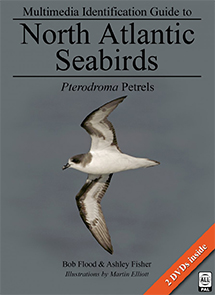Weekly birding round-up: 5 - 11 Oct 2016
The easterly conditions which developed at the end of last week remained in place for the whole of this week. A large ‘blocking’ high pressure settled in over Scandinavia, refusing to budge, and the Atlantic lows just stalled out to the west. Right from the beginning of the week the isobars were extending back to east of Moscow and the easterly flow just went on and on. Such a sustained period of easterly winds in October is most unusual though it recalls 1975 for those old enough to remember former glories. Last week was amazing enough but this week topped it, providing the Northern Isles and the east coast with a fabulous array of birds including a long-awaited ‘first’, a mouth-watering selection of other top class rarities, plenty of more ‘normal’ rarities’, lots of scarce migrants including a record-breaking influx of Little Buntings and a veritable flood of Yellow-browed Warblers and many common migrants too. In an autumn previously dominated by excitements in the west, this represented for east coast birdwatchers a very welcome reprieve. Indeed the collection of rare birds recorded this week on the east coast (but most of all on Shetland) must be amongst the most impressive ever noted in Britain. It was certainly the busiest ever week for bird news (and for weekly roundups!).
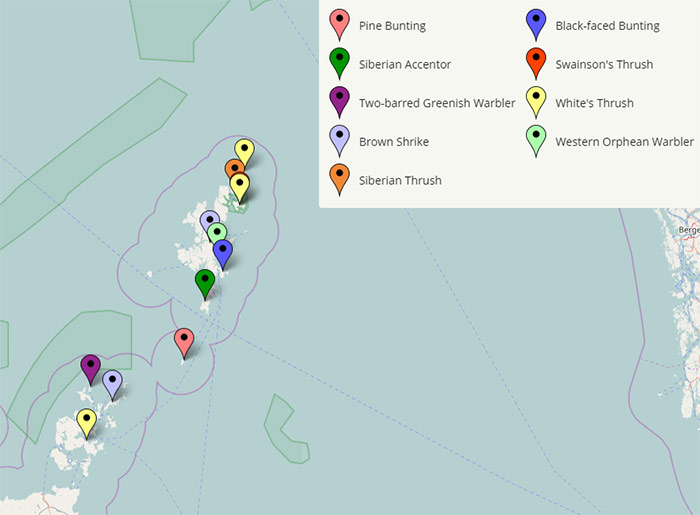
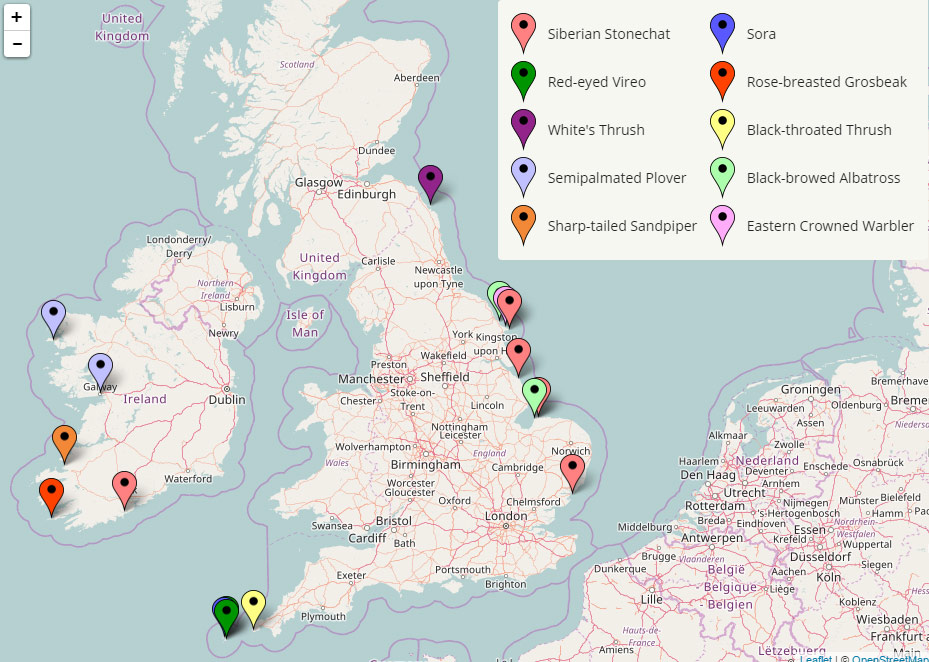
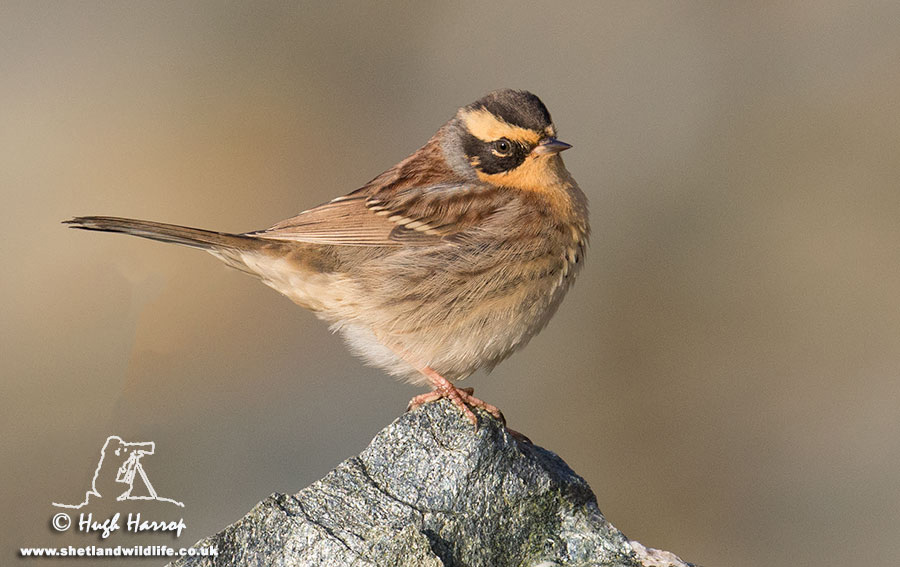
Top billing goes of course to the week’s ‘first’, none other than the long-awaited Siberian Accentor on Mainland Shetland on 9th and still present to be twitched on 10th. This species has been steadily accruing records in Scandinavia for some years now but it has always been considered reluctant to cross water (although its semi-regular appearances in Alaska rather refute that theory). The myth was well and truly busted, however, with the discovery of this bird in a small quarry north-east of Scousburgh where it showed well in bare, open habitat. Every east coast birder has fantasised about finding a Siberian Accentor although the honour of the first was always likely to go to Shetland. And so it has proved. In a year which has already seen an astonishing run of ‘firsts’, Siberian Accentor is the best of them all - surely ‘bird of the year’. For those not on Shetland, the updates on this bird were no doubt followed with a bittersweet mixture of vicarious excitement and not a little jealousy.
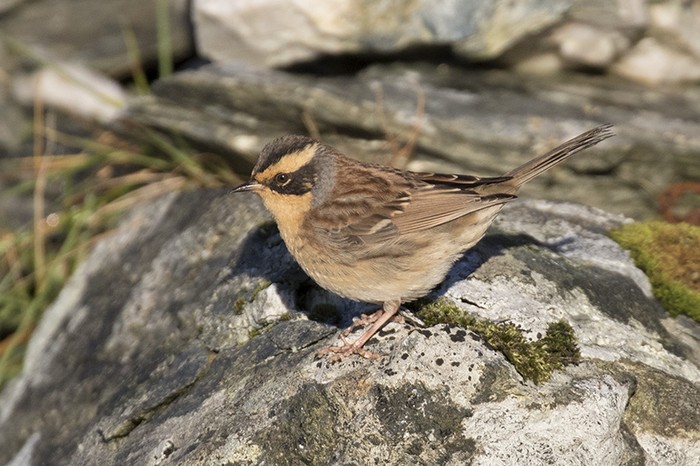
The story of the finding of this bird has already been published online here and what a terrific read it is! It just goes to prove the serendipitous nature of bird finding with a host of minor apparently inconsequential decisions (where to go, when to have lunch, which bush to walk past etc.) having entirely unpredictable consequences. The shock of seeing this bird suddenly appear in one’s binocular field of view can only be imagined and the lucky finder will be widely envied.
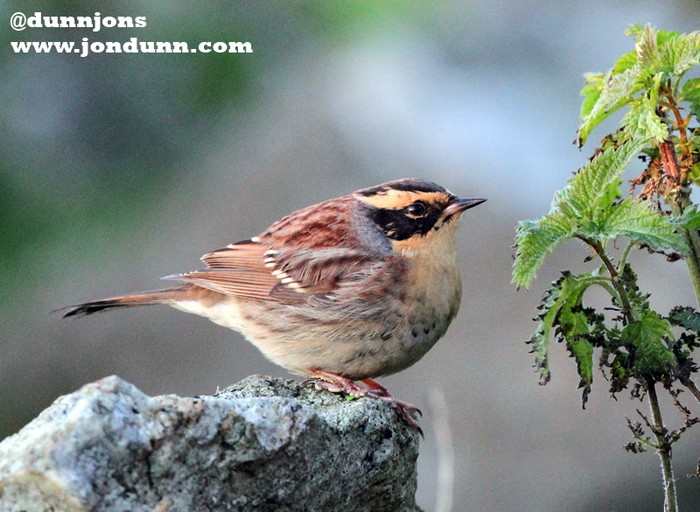
With its rich butter-yellow supercilia and throat, dark ear coverts and maroon-tinged upperparts, this is a classy species in a classy genus, and arguably the best-looking of the lot. It resembles Brown, Radde’s and Black-throated Accentors but the latter is the only real confusion risk for a British vagrant and, fortunately, this bird was seen well and its identity quickly established. Just in case one appears this week, a Black-throated Accentor would show duller upperparts, lacking Siberian’s maroon hues, a paler supercilium and at least a hint of some throat mottling (although this can on some be largely obscured by pale feather fringes). Since the appearance of this bird there have been further records in Sweden and with Siberian Accentors clearly enjoying a ‘banner year’ it is perhaps not too far-fetched to think that another may be in the offing……
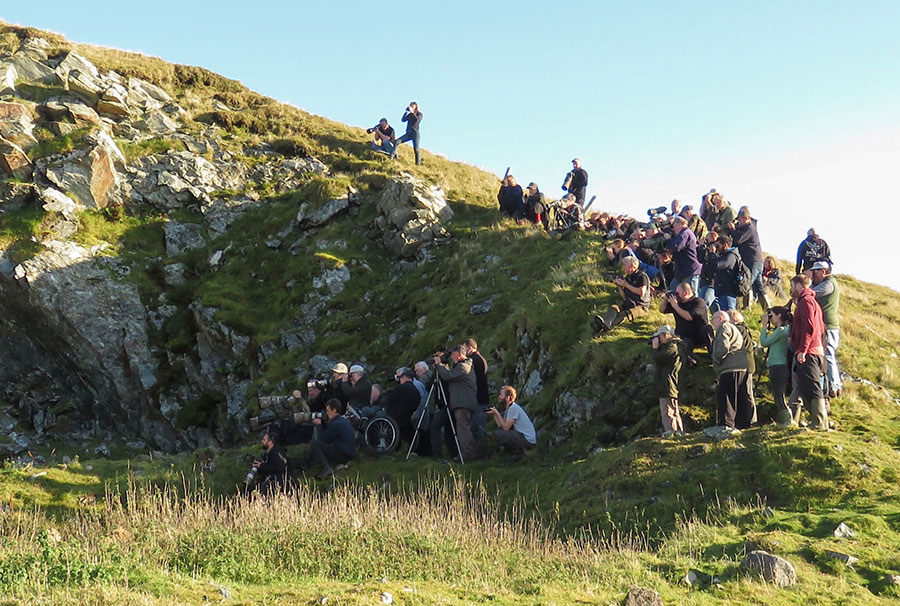
Siberian Accentor, Shetland from Shetland Wildlife.
Second place in the rankings must go to the ‘Two-barred Greenish Warbler’ discovered on Papa Westray, Orkney the very same day. This is the fifth British record but the first for some time and another excellent record from the island now famous for having hosted last autumn’s Chestnut Bunting. The first accepted record was on St. Agnes, Isles of Scilly on 21st to 27th October 1987 although an apparently good but currently unaccepted individual was at Holme, Norfolk on 14th to 19th October 1976. Subsequent records come from Wells, Norfolk on 15th to 16th October 1996, Bryher, Isles of Scilly on 27th to 28th September 2003 and Filey, Yorkshire on 16th to 18th October 2006. With the last bird now ten years ago this taxon had slipped off the radar a little so its reappearance here is very welcome. The first online photographs of the Papa Westray bird show all the key features – an essentially Greenish Warbler-like appearance with an ‘open’ bright face, a vestigial median covert wing-bar and a broad rectangular greater covert wing-bar, superficially suggesting Yellow-browed Warbler. Indeed this species could easily be taken for a Yellow-browed on a brief view.
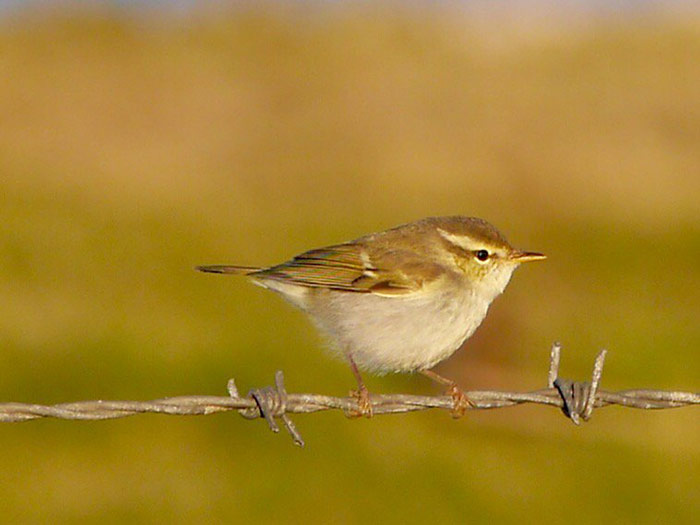
The taxonomy of ‘Two-barred Greenish Warbler’ has long been contested but under current BOU taxonomy it is regarded as the East Siberian subspecies plumbeitarsus of Greenish Warbler. The taxonomic position of this taxon may yet change, however. BOU has disbanded its taxonomic subcommittee and stepped back from its role as a taxonomic authority. It will shortly adopt one of the four main global taxonomies as the basis for the British List, at which point there will inevitably be one or two adjustments both upwards and downwards. In this context it is worth noting that at least IOC treats ‘Two-barred Greenish Warbler’ as a full species, so watch this space….
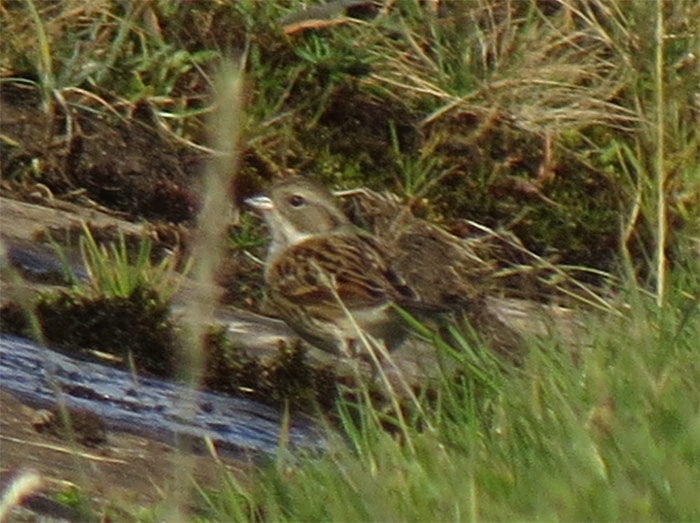
Next in this week’s parade is the Black-faced Bunting found on Bressay, Shetland on 10th and still present on 11th. This is only the sixth British record of this Siberian bunting, the previous birds being in Greater Manchester in 1994, Northumberland in 1999, Devon and Shetland (Fair Isle) in 2001 and Yorkshire in 2004. Though a little drab, this is an exciting find indeed and another fine addition to Shetland’s current run of top rarities.
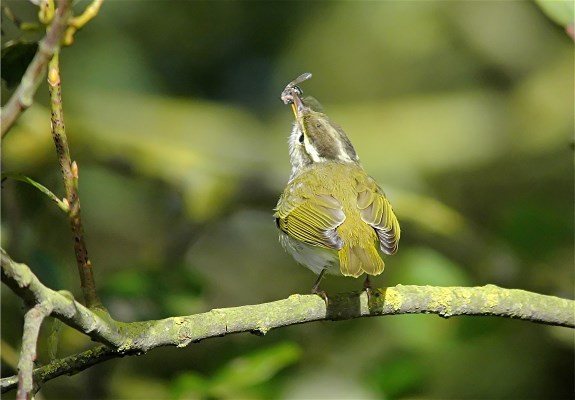
Also very much in the headlines was the continued presence to 6th of Britain’s fourth Eastern Crowned Warbler at Bempton, Yorkshire where it gave good views to all comers. Although some people will now have seen three in Britain (all, curiously, in the Northeast) this is still very much a fantasy bird, particularly in East Anglia and Shetland where the species has yet to make an appearance.
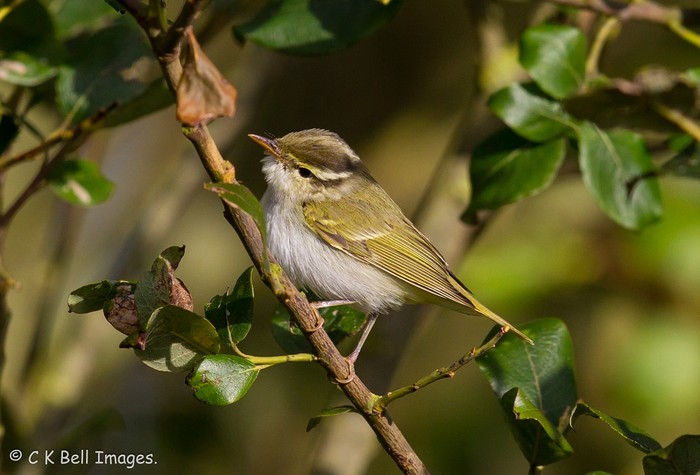
It has of course a long and fascinating history as a European vagrant, first recorded on Heligoland, Germany on 4th October 1843, 173 years to the very day before the discovery of the Bempton bird. The occurrence in Europe of such a far eastern species raised eyebrows for decades but the modern sightings of Eastern Crowned Warbler in Norway, Finland, The Netherlands and now Britain fully vindicate this original record. As if to drive the point home, the species has even occurred on Heligoland once more.
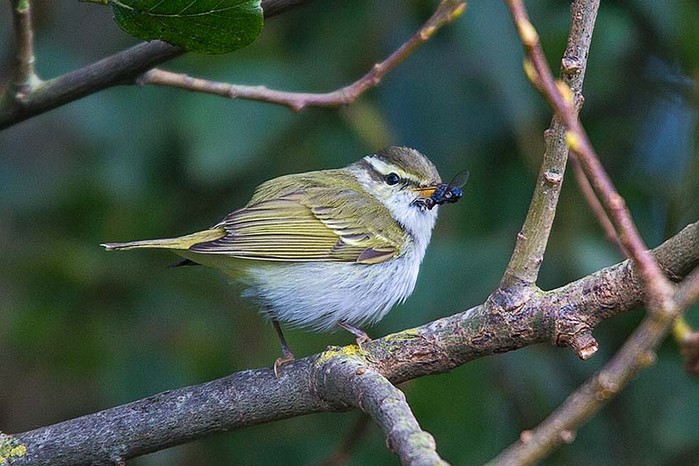
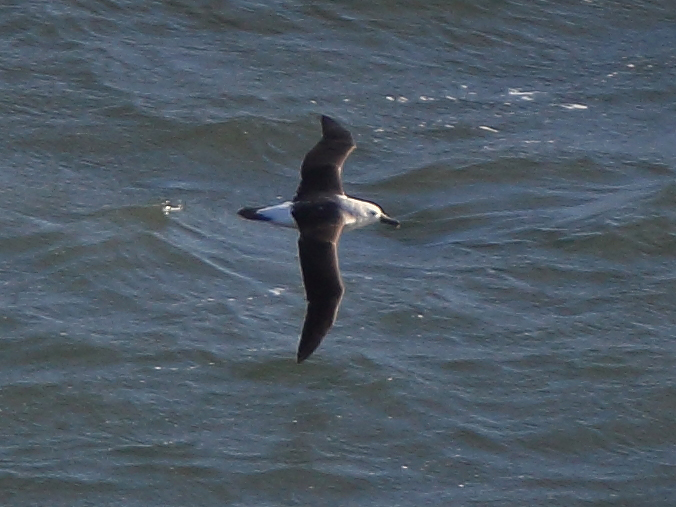
As if watching an Eastern Crowned Warbler wasn’t excitement enough, the crowds enjoying the bird on 5th were in for a treat. At 0903 a Black-browed Albatross was seen cruising south past Filey (just to the north) and, following a quick call to the Bempton warden and a loud shout, a dash to the viewing platform ensured that at 0920 everyone saw it cruise past. It wasn’t in a hurry, rounding Flamborough Head at 0955 and was then off Old Fall Hedge at 1005 before heading back north again past Thornwick Bay at 1056. A dark-billed non-adult bird, it is presumably the individual recently seen off Sweden. It becomes the eighth record for Yorkshire.
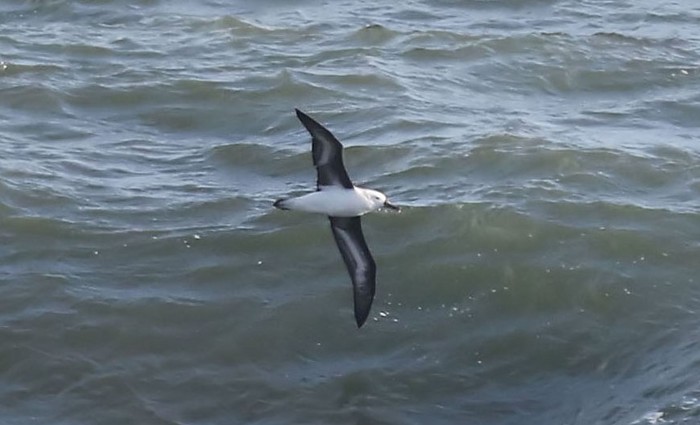
Nor was the story over for at 1535 on 6th it flew east past Cley, Norfolk and was seen subsequently off Overstrand, Walcott and Happisburgh, also Norfolk, providing this county with its third record. The trail then went cold again on 7th but the bird reappeared on 8th, flying north past Hunstanton, Norfolk at 1405 and then lingering off Scolt Head Island from 1450 to 1509 before flying west past Hunstanton again at 1620. Thereafter, sadly, the trail went cold but with continuing northeasterly winds might it still make a reappearance?
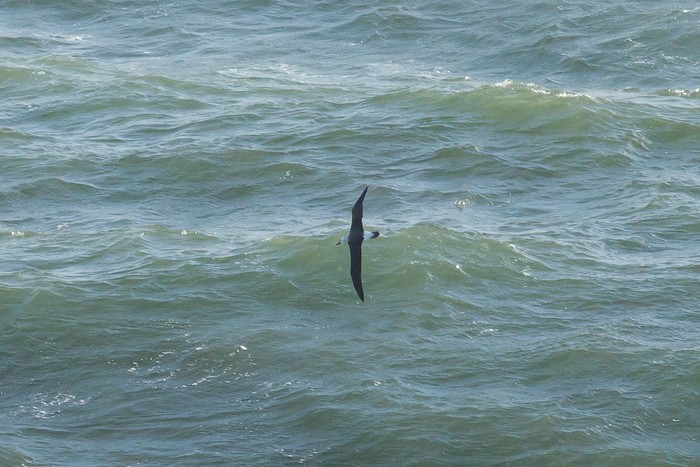
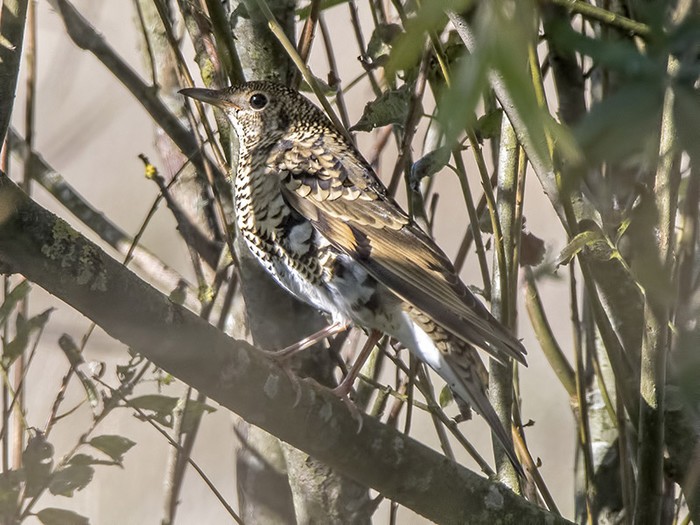
Back to ‘Sibes’, however, and arguably the most charismatic of them all. Although not the rarest, White’s Thrush is certainly one of the most desirable. With no identification problems and a guaranteed massive adrenaline rush for the finder, it is, perhaps, the ‘holy grail’ for east coast patchworkers. The species was of course very much on the radar after the recent record-breaking run of birds in Norway and a brief bird on Shetland last week so it was no surprise to hear of another, found early in the day on 5th on Holy Island, Northumberland. Here it performed well till dusk, often ‘freezing’ in the open and giving sometimes spectacular views to a fast-growing crowd. The tides were even favourable too, allowing access until late afternoon. It was seen apparently going to roost at dusk but sadly there was no sign of it next morning.
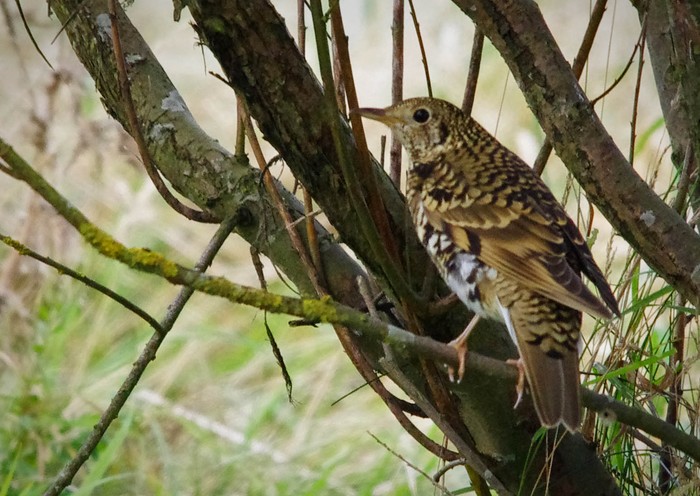
This represents the first twitchable English White’s Thrush away from Scilly since the bird at Easington, Yorkshire on 10th October 2004. It was the third for Northumberland, following records on Inner Farne on 24th September 2012 and on Holy Island itself on 2nd November 1914 - just 102 years ago! The normal pattern was restored, however, with the appearance of another White’s Thrush on Shetland the very same day - this one on Fetlar - and then, to further emphasise Shetland’s dominance, another was at Skaw, Unst on 7th. Then yet another was retrospectively identified from photographs taken on 3rd October in Kirkwall, Orkney.
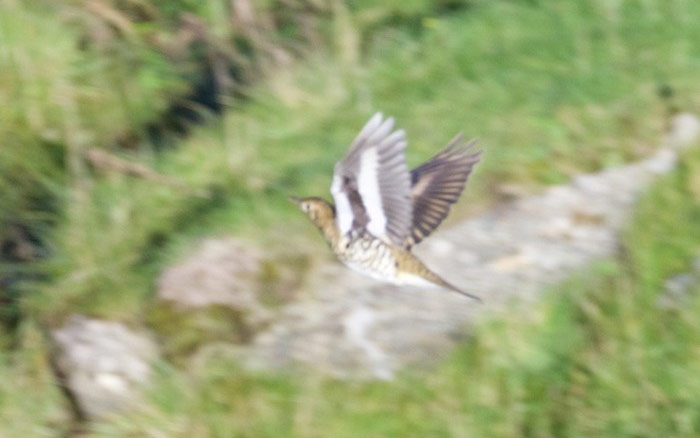
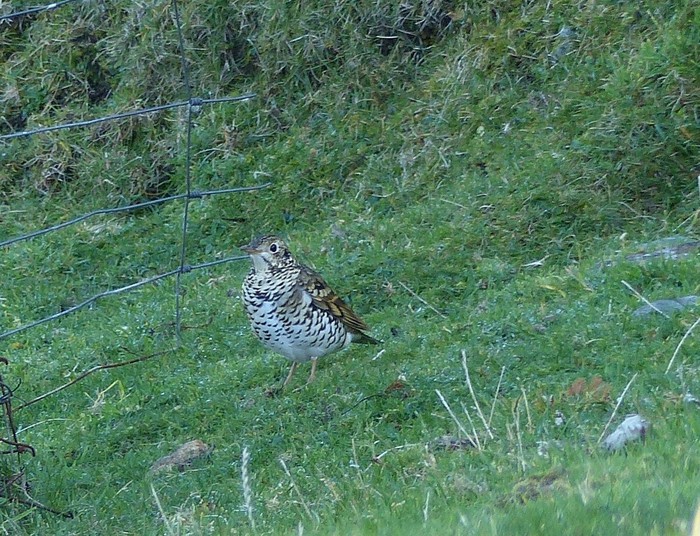
Amongst the other riches on offer on 6th was a male Orphean Warbler near Eswick, Mainland Shetland. Perhaps surprisingly given the easterly conditions, the photographs and ‘from the field’ reports suggested that this bird had uniform buff undertail coverts and was most likely a Western Orphean Warbler . If so, this will be only the fourth British record following one at Portland, Dorset in 1955 and two recent twitchable individuals - at Hartlepool, Cleveland in May 2012 and at St. Brides, Pembrokeshire in November/December 2013. It is therefore yet another splendid addition to Shetland’s already ample list. Britain’s four other records of Orphean Warbler (in Cornwall in 1967 and 1991, on the Isles of Scilly in 1981 and in Aberdeenshire in 1982) are all unassigned to species so identifying an eastern bird and adding it to the British List remains an unclaimed prize.
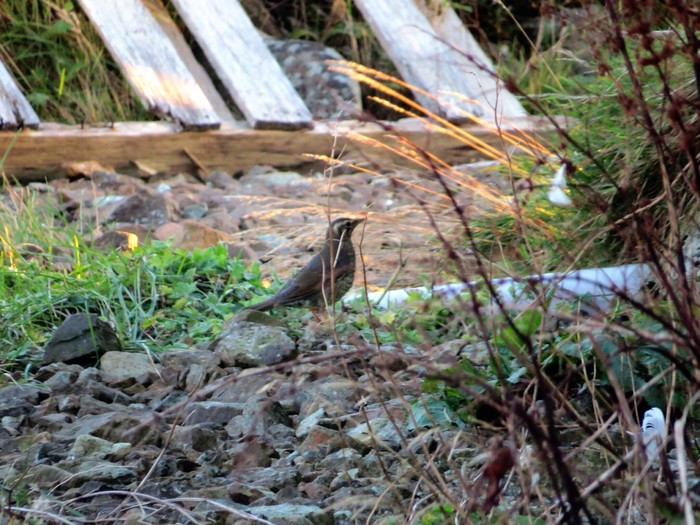
Next up on 6th, and back to ‘Sibes’, was the other legendary Zoothera - a Siberian Thrush (a first-year male) at Uyeasound, Unst, Shetland. With only nine British records to the end of 2014 (and another two in Ireland) this remains a very rare bird indeed. Records are spread widely but, including this bird, the last four have now been on Shetland.
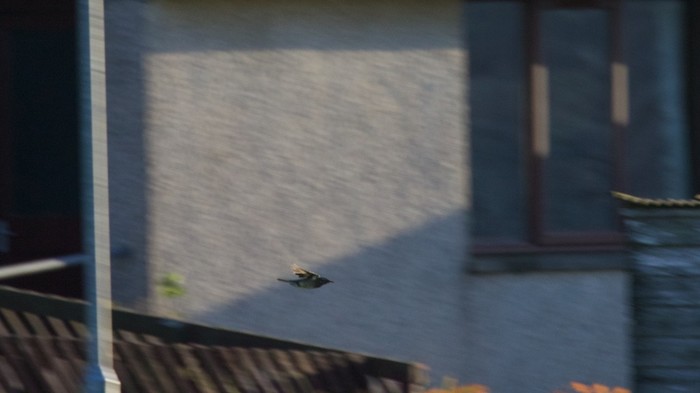
Back on the mainland, the best discovery on 6th (and still present on 7th) was an apparent first-winter male ‘Stejneger’s Stonechat’ at Landguard, Suffolk. The occurrence in Britain of dark-looking Siberian Stonechats has been noted since 1991 when a single was recorded at Happisburgh, Norfolk and two others were on Fair Isle, Shetland. Since then several more similar-looking birds have occurred including the DNA-confirmed bird at Portland, Dorset on 24th to 26th October 2012 (and previously at Texel, The Netherlands), which secured its place on the British List.
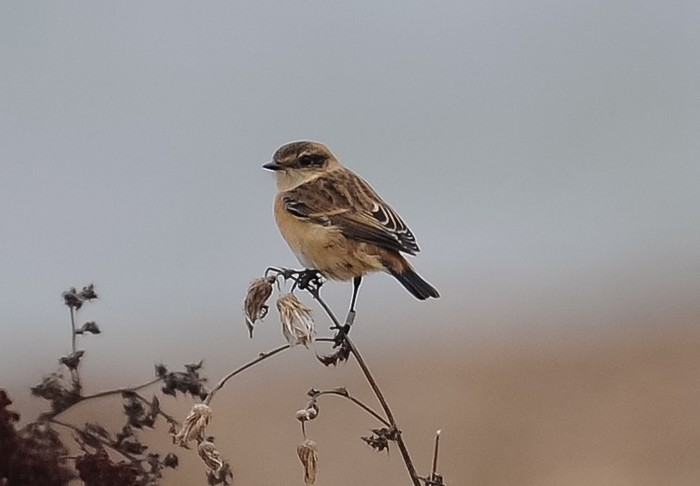
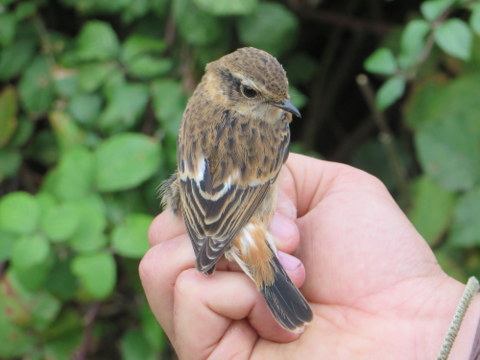
Under current BOU taxonomy ‘Stejneger’s Stonechat’ is regarded as the East Asian subspecies stejnegeri of Siberian Stonechat but genetic studies have shown a significant divergence between it and the more westerly Siberian-breeding maurus, thus indicating the potential for species status. Furthermore, as with ‘Two-barred Greenish Warbler’, there is scope for taxonomic change in the wake of the BOU’s migration to a global taxonomy. IOC split ‘Stejneger’s Stonechat’ as well. Taxonomic (and listing) considerations aside, these are terrific birds – some as dark as European Stonechats but sporting a suite of classic Siberian Stonechat features including a white throat, clean unmarked flanks and an unstreaked orange rump. Males also sport striking black underwing coverts.
Another Siberian Stonechat was found on 6th - at Donna Nook in Lincolnshire - and by 8th this was also being reported as a stejnegeri candidate. It was still there on 10th. The online images indeed seem to support this contention, this bird (another first-winter male) showing richly-toned, rather dark upperparts and a rather dark ginger rump.
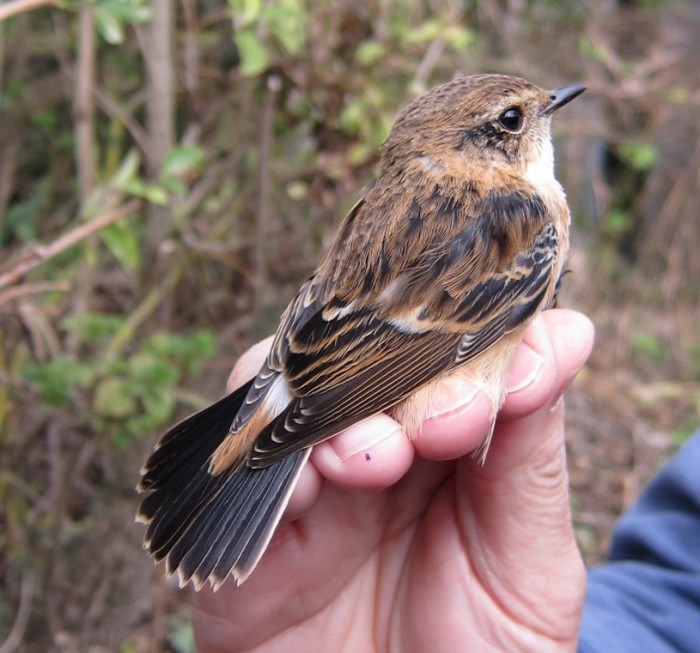
Both these birds (and their predecessors in Britain) differ quite dramatically from pale, peachy-rumped maurus and a fairly consistent ‘search image’ is now emerging. The field identification of autumn stejnegeri remains a work in progress but it seems likely that at least some of these dark birds will in time become more confidently diagnosable without DNA. In the meantime the genetic investigation of shed material from the Landguard bird will prove highly instructive and help us to develop this intriguing ongoing story.
A third Siberian Stonechat was at Thornham Point, Norfolk on 9th, and this was also later proposed as a potential stejnegeri. Clearly we are seeing, as in 1991, a small arrival of far eastern Siberian Stonechats, hardly surprising given the origin of some of the other birds around at the moment. Finally, a fourth Siberian Stonechat (another first-winter male) was near Kinsale, Cork on 11th but details of its appearance were not known at the time of writing.
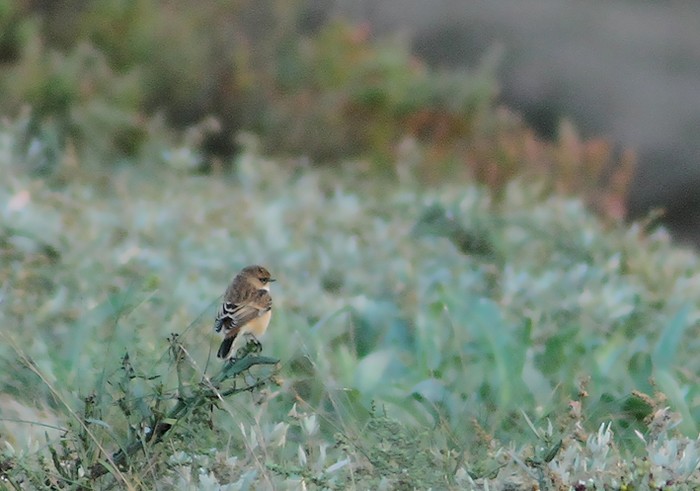
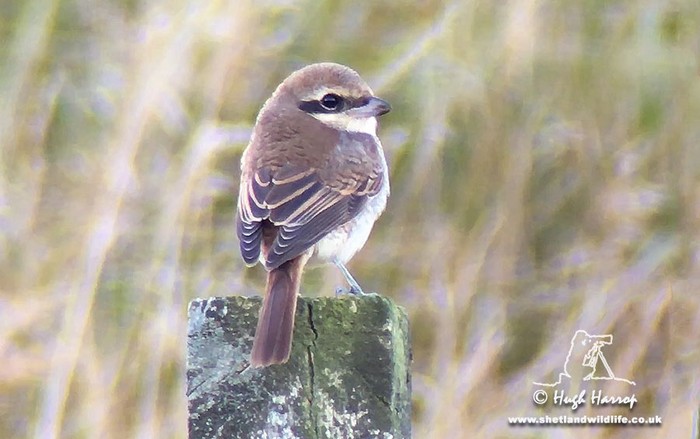
Almost overlooked in the rush of rarities on 6th was the autumn’s third Brown Shrike , this one a very welcome find on Sanday, Orkney and going at least some way towards countering the traditional dominance of Shetland in such matters. Balance was restored almost immediately, however, by the discovery of the autumn’s fourth back on Shetland, this one at Lower Voe, Mainland on 6th to 8th. Whether any of the Shetland records can be linked remains to be seen but whatever the final official total this is an impressive arrival of a once barely dreamed-of species.
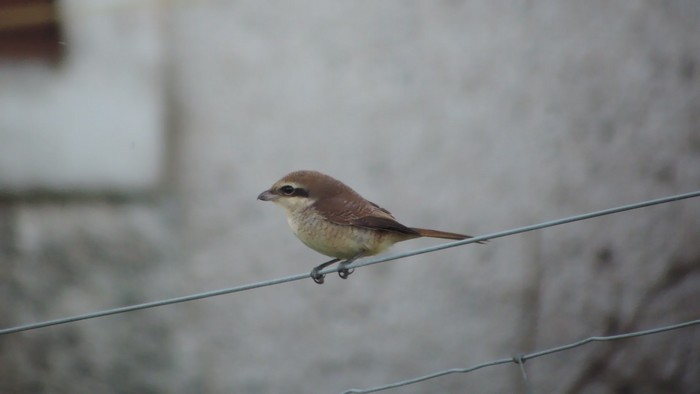
Brown Shrike, Voe, Shetland from Shetland Wildlife.
The week’s final major rarity discovery on Shetland was a female Pine Bunting on Fair Isle. This is an increasingly rare bird in Britain with a noticeable reduction in records since 2005. In fact there have only been three in the last ten years - on Fair Isle in October/November 2007, in Cornwall in January 2009 and on Unst, Shetland in November 2011. Shetland has always been good for this species, the islands having produced fifteen out of the national total of fifty but with the decline in occurences since 2005 this is fast becoming a Shetland speciality. The days of twitchable birds in England (notably those at Big Waters, Northumberland in 1990 and at Dagenham Chase, Essex in 1992) now seem a long time ago. Even the bird at Choseley, Norfolk in 2004 is now twelve years ago!
Unsurprisingly, most records are of the more obvious males, the less flamboyant females providing a potentially challenging identification problem. However, the ’back of the camera’ pictures of the Fair Isle bird show overall pale and grey hues, a crisp, well-defined face pattern, cold whitish underparts and apparently white fringes to the primaries and tail feathers. As well as eliminating a dull Yellowhammer it is also necessary to consider a Pine Bunting x Yellowhammer hybrid but this bird appears a good candidate for the genuine article.
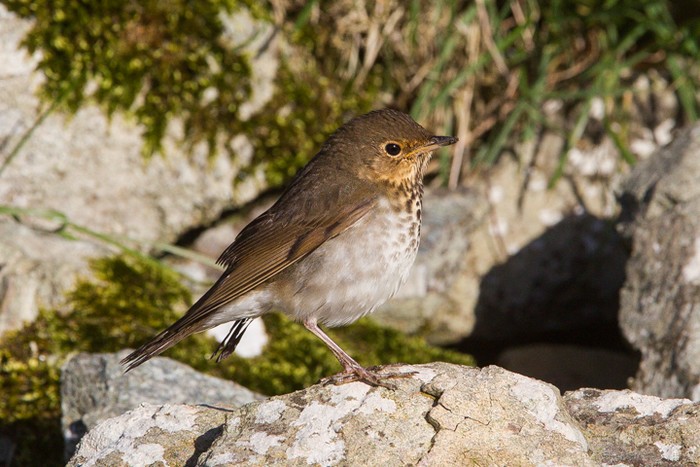
To complete the line-up of major Shetland rarities, last week’s Swainson’s Thrush was still on Fetlar to at least 10th. On 5th it formed half of an impressive ‘east meets west’ thrush duo by being present just up the road from a White’s Thrush.
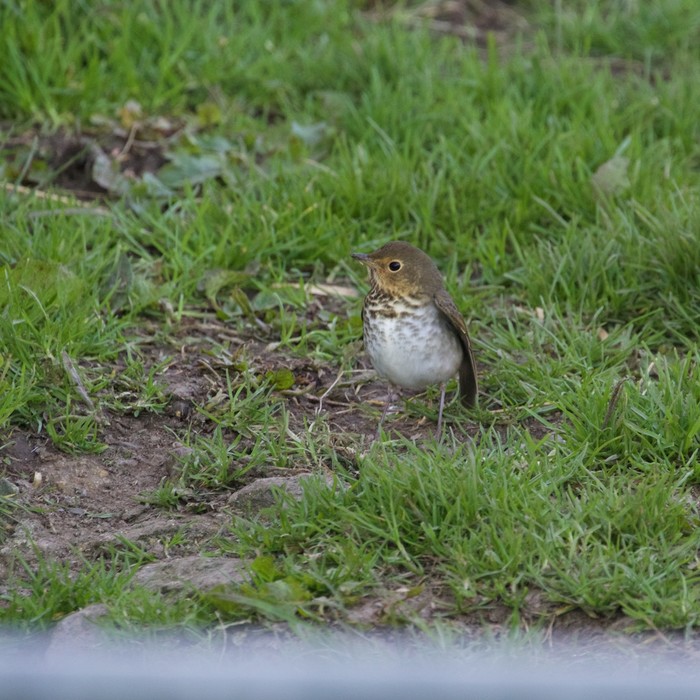
At the opposite end of the country a Black-throated Thrush was in Nanjizal Valley, Cornwall in the early morning of 9th before flying north. This is a very rare bird in Cornwall (only its second) though the Isles of Scilly have recorded five. The first was also at Nanjizal, on 15th October 2002.
Turning finally to the west, Ireland’s best bird of the week was, for once, not an American bird but one from Siberia – a juvenile Sharp-tailed Sandpiper at Carrahane Strand, Kerry on 7th and 9th. This is a rare bird indeed with only 32 previous records in Britain and only seven in Ireland. Like most vagrant East Asian waders, most are early to mid-autumn adults so late autumn juveniles are therefore particularly prized. This is only the sixth young bird ever. The previous Irish birds have been in Wexford, Cork, Dublin and Clare so this represents a new bird for Kerry.
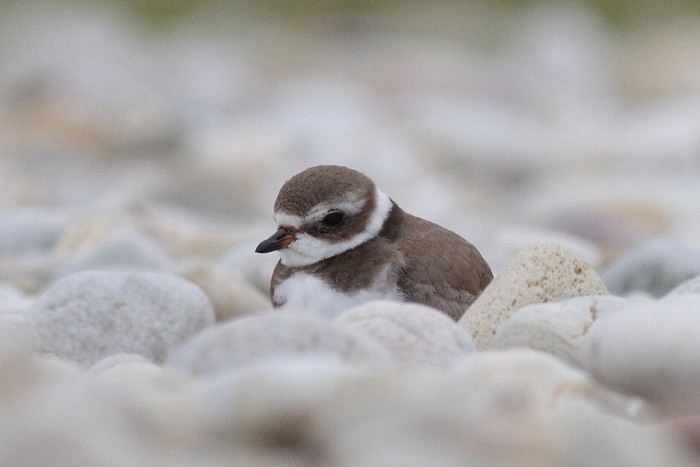
As for American waders, a great find on 6th was Ireland’s sixth Semipalmated Plover (and the fourth this year!) at Galway’s Ardmore Strand. The online images show a super-looking juvenile - tiny with a narrow but complete breast-band, a weak supercilium, white reaching the bill base below the lores and palmations too! To complete the set of required features, it was also heard to call. Next door in Mayo, last week’s juvenile was seen again on Achill Island and was still present to at least 9th. This autumn’s remarkable surge of records begs the obvious question as to whether we are overlooking this species or whether this has just been a good year.
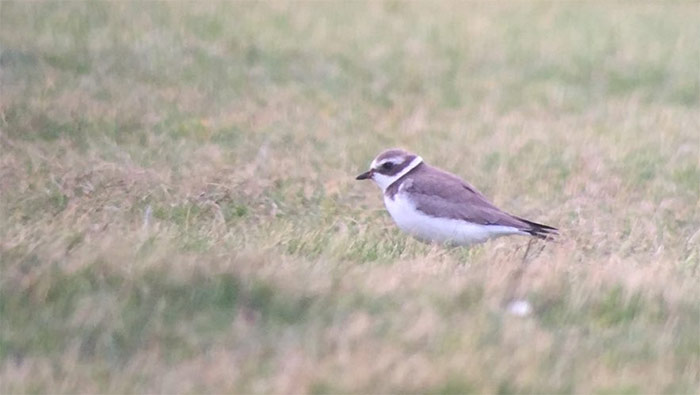
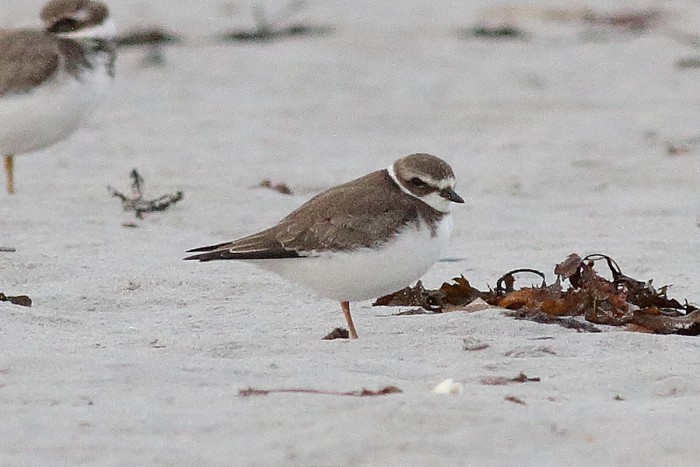
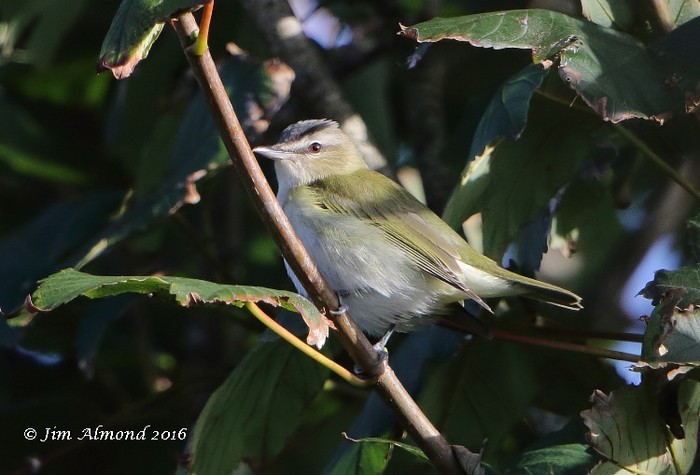
The only American passerines of the week were Red-eyed Vireos on St. Martin’s, Isles of Scilly on 5th and on St. Mary’s on 10th. Also still on Scilly was the juvenile Sora on Tresco Great Pool to at least 11th. In Ireland the Rose-breasted Grosbeak was still at Garinish, Cork to at least 10th.
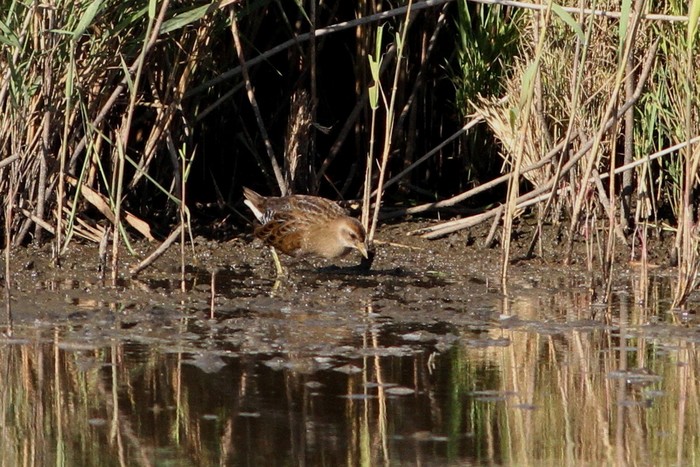
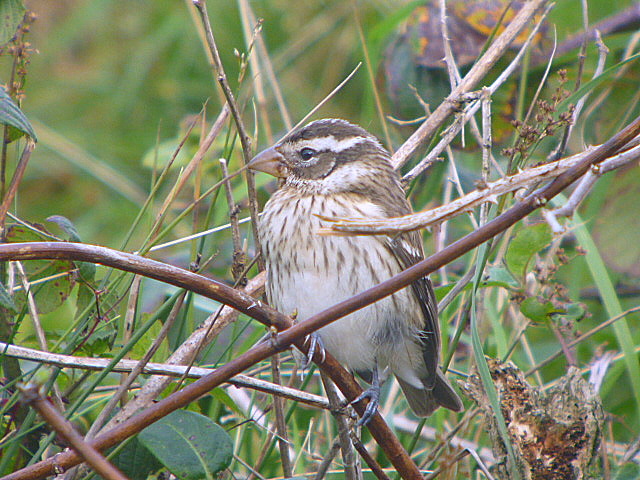
Finally, our familiar trio of long-stayers was still present all week – the Western Purple Swamphen at Alkborough Flats, Lincolnshire, the Hudsonian Whimbrel still at Perranuthnoe, Cornwall and the Dalmatian Pelican in Devon on the Taw Estuary to at least 9th and then back in Cornwall on 10th and 11th – on the Camel Estuary near Wadebridge.
SIBERIAN ACCENTOR 12th record for Finland. Photo by Janne Aalto. #birdwatching pic.twitter.com/Bgfa2UQZ6d
— Arnold Meijer (@ArnoldMeijer) October 6, 2016
Needless to say this was also a busy week for ‘Euronews’, headlined by at least two Siberian Accentors in Finland and four in Sweden and an Eyebrowed Thrush and a Pechora Pipit in Norway. Other eastern passerines included a Green Warbler in Romania, an apparent ‘Stejneger’s Stonechat’ in The Netherlands and an Eastern Olivaceous Warbler in Finland. There were some American birds, however, most notably a Canada Warbler , a Common Yellowthroat , a Yellow-billed Cuckoo and a Scarlet Tanager on Corvo, Azores, a Mourning Dove in Spain and a Western Sandpiper in France.
Reversing the traditional roundup order, let’s stay with the passerines for they were truly the main players this week. In addition to the mega-rarities already listed there was inevitably also a long list of other excitements.
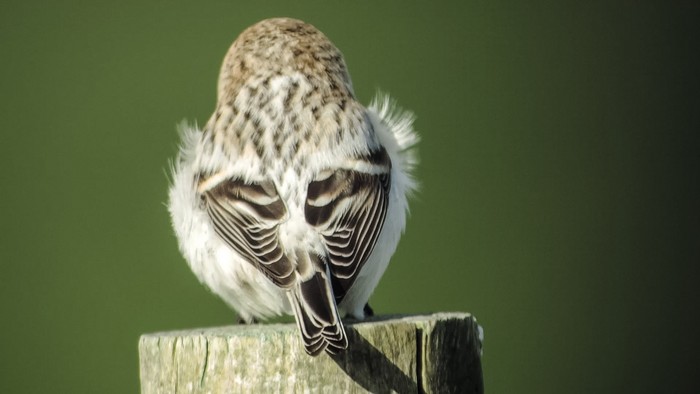
Firstly, last week’s Hornemann’s Arctic Redpoll was still on Unst, Shetland to 6th with others at Aith and West Burrafirth, both Mainland Shetland, on 7th and on South Ronaldsay, Orkney on 8th. Another Arctic Redpoll (albeit of an unspecified subspecies) was on Out Skerries, Shetland on 11th. Last week’s Pechora Pipit was still on Fair Isle, Shetland to 10th whilst, at the other end of the country, Scilly’s Blyth’s Pipit was present to 5th.
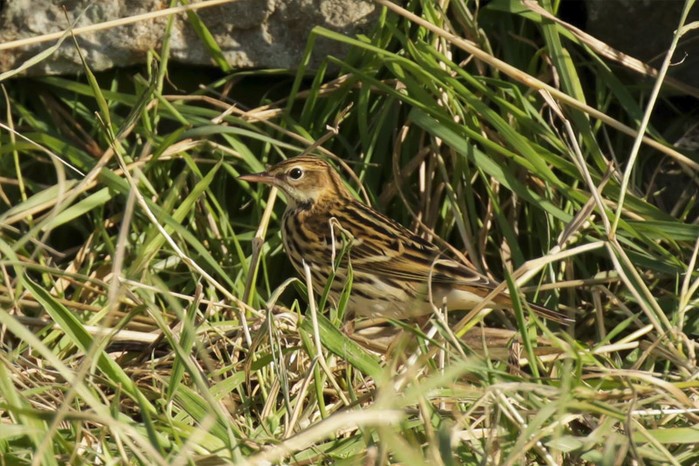
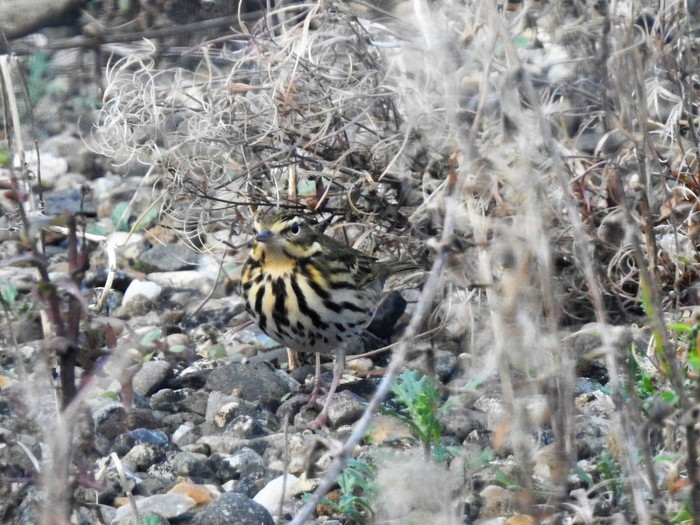
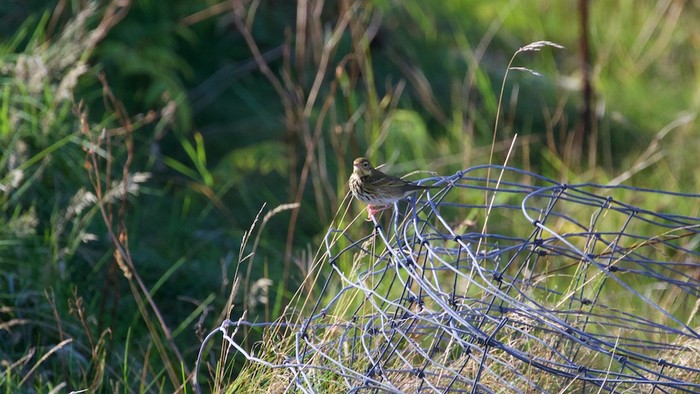
Olive-backed Pipits put in their first significant showing of the autumn with singles on Barra, Western Isles and Fair Isle on 6th followed by two on Fair Isle next day when there were also singles on Unst, Shetland, at Kilnsea, Yorkshire and on Bryher, Isles of Scilly. One remained on Fair Isle to 10th with new discoveries at Whitburn, Durham, Flamborough Head and Easington, both Yorkshire, and Dunbar, Lothian. On 9th the Easington bird was still present and another was at Spurn. Others were on Dursey Island, Cork on 10th and at West Burra, Mainland Shetland and Wells, Norfolk on 11th. Much rarer now than Olive-backed Pipit, Red-throated Pipits were on Fair Isle on 6th to 11th, St. Mary’s, Isles of Scilly on 7th, The Lizard, Cornwall on 8th and at Fleetwood, Lancashire on 11th.
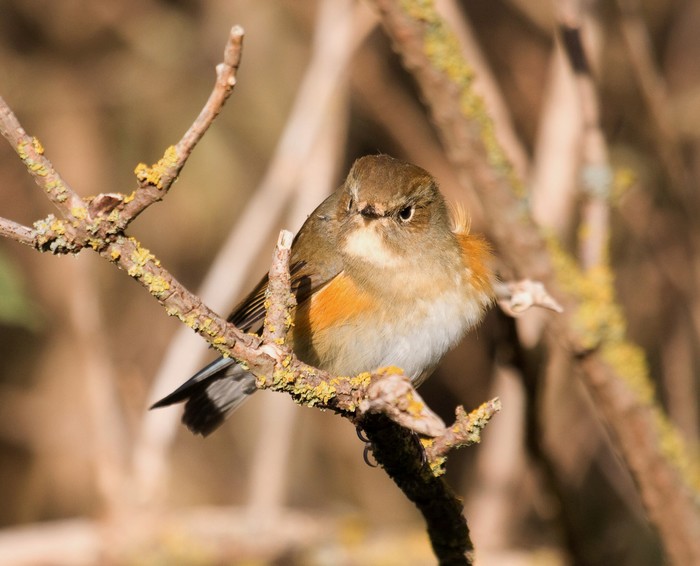
There was also a flurry of sixteen more Red-flanked Bluetails , an influx sure to push the species ever closer to scarce migrant territory. Singles were at Crail, Fife on 5th to 6th, Spurn, Yorkshire on 5th, Fetlar and Fair Isle, both Shetland, on 6th to 7th, Easington, Yorkshire and North Ronaldsay, Orkney on 7th, Beachy Head, Sussex on 8th, St. John’s Point, Down on 8th to 10th, Amble, Northumberland and Grimston, Yorkshire on 9th, Hartlepool, Cleveland on 9th to 10th, Dale of Walls, Shetland and Great Orme, Conwy on 10th, Donna Nook, Lincolnshire on 10th to 11th and Hoswick, Mainland Shetland and Spurn again on 11th.
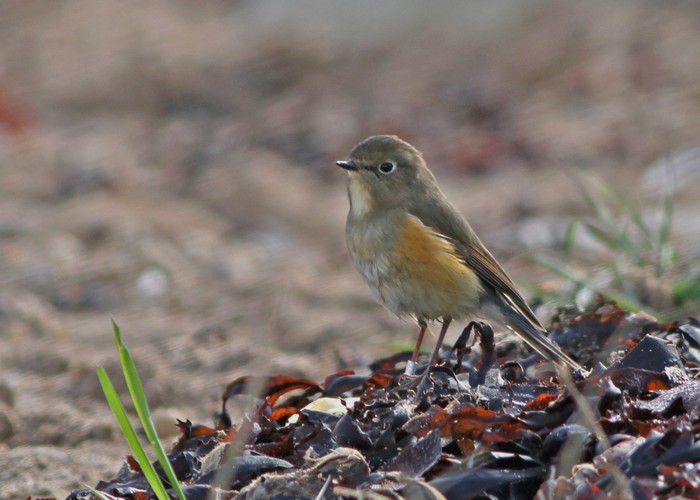
By contrast there were just seven Radde’s Warblers – at Scarborough, Yorkshire on 5th, Wells, Norfolk on 5th to 6th, Holkham, also Norfolk on 6th to 10th, Isle of May, Fife on 6th to 8th, Sea Palling, Norfolk on 7th, Brownstown Head, Waterford on 9th to 11th and Wells, Norfolk again on 11th. There were ten Dusky Warblers - at Flamborough Head, Yorkshire on 6th to 9th, South Nesting, Mainland Shetland on 8th, Cromer, Norfolk on 7th to 11th with another on 9th, Burnham Overy Dunes, also Norfolk, on 8th, Nanjizal, Cornwall on 9th, Out Skerries, Shetland on 9th to 11th, Wester Quarff, Mainland Shetland on 10th and Cley and Waxham, both Norfolk, on 11th.
The most remarkable Phylloscopus event was at Bempton, Yorkshire which, as well as hosting an Eastern Crowned Warbler, also attracted a Greenish Warbler on 5th to 6th and then an Arctic Warbler on 6th to 8th! Throw in some Yellow-browed Warblers and you have perhaps the best concentration of wing-barred leaf warblers ever to grace a single site at the same time. Another Greenish Warbler was on Sanday, Orkney on 8th and other Arctic Warblers were on St. Mary’s, Isles of Scilly on 7th, at Tynemouth, Northumberland on 9th and 10th and at Wells, Norfolk on 11th.
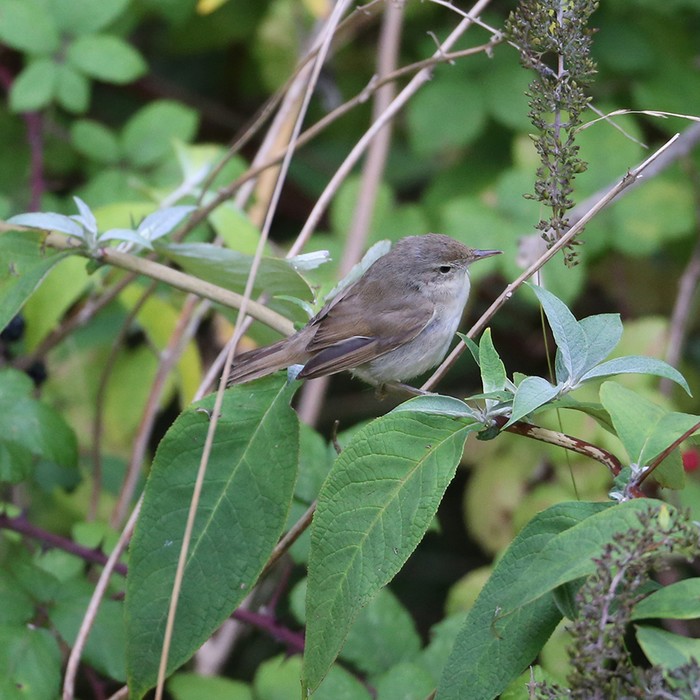
Turning to other warbler families, Blyth’s Reed Warblers were at Berry Head, Devon on 5th to 6th, Isle of May, Fife and Unst, Shetland on 5th, Fair Isle and Out Skerries, also Shetland, on 6th, Portland, Dorset on 6th to 8th, Eswick, Shetland on 7th, Sanday, Orkney on 8th, Whalsay, Shetland on 9th to 11th and Landguard, Suffolk and Isle of May, Fife again on 10th.
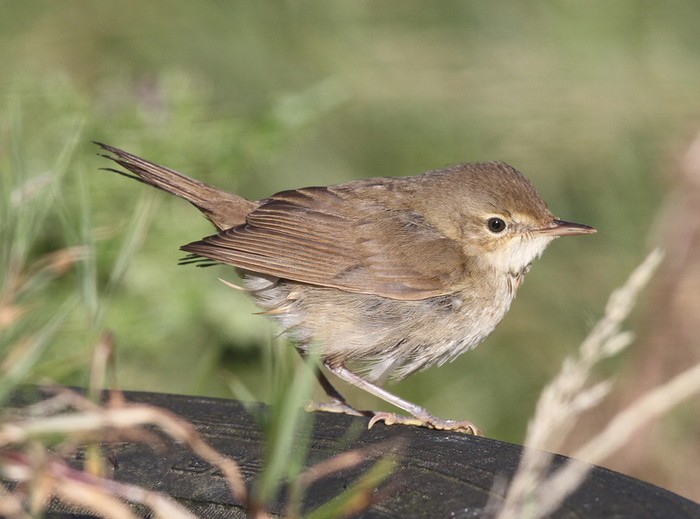
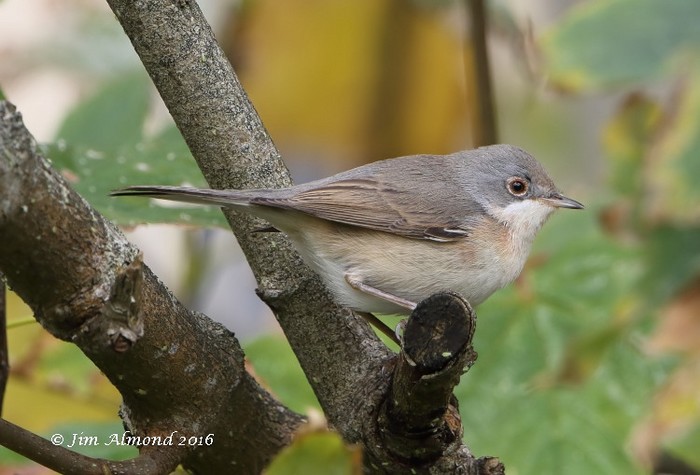
Subalpine Warbler species was at Portland, Dorset on 5th and 9th and another was on St. Mary’s, Isles of Scilly on 9th to 11th. Booted Warblers were on the Great Orme, Conwy on 5th to 8th and at Firkeel, Cork on 7th.
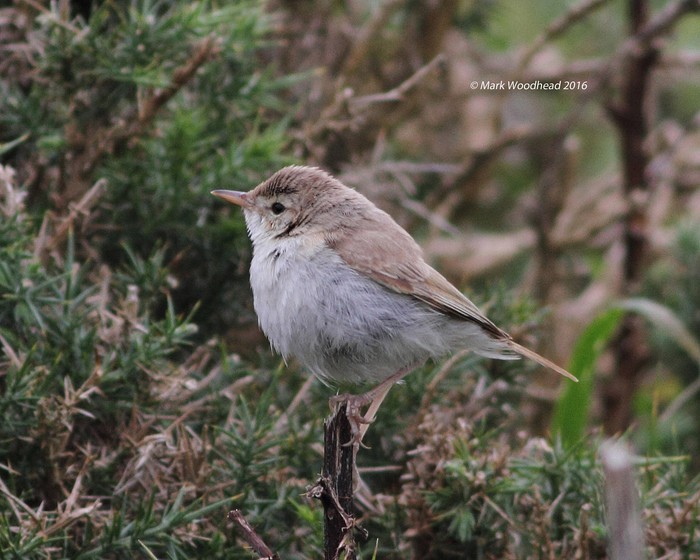
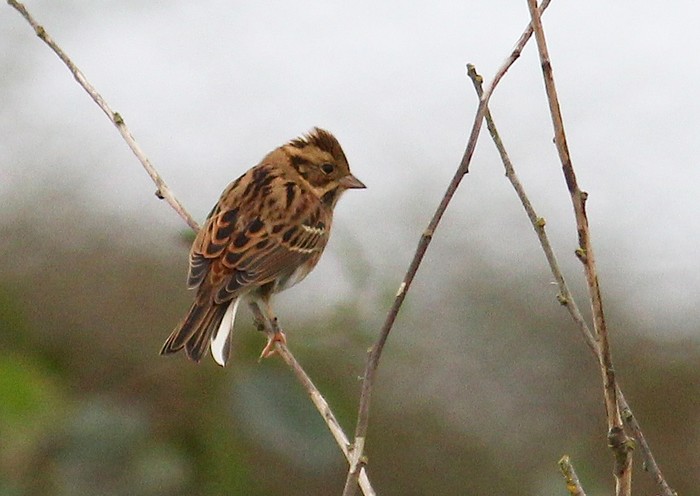
Rustic Buntings were represented by a single at Kilnsea, Yorkshire on 6th to 9th but Little Buntings , by contrast, were almost ubiquitous. This week saw what was surely one of the largest ever influxes of this delightful tiny bunting. Perhaps seventy were recorded, all on the east coast from Shetland down to Norfolk apart from singles at Portland, Dorset, Polgigga and near Nanquidno, both Cornwall, and four on the Isles of Scilly. Several sites recorded multiples, with six on North Ronaldsay, Orkney the most at a single site.
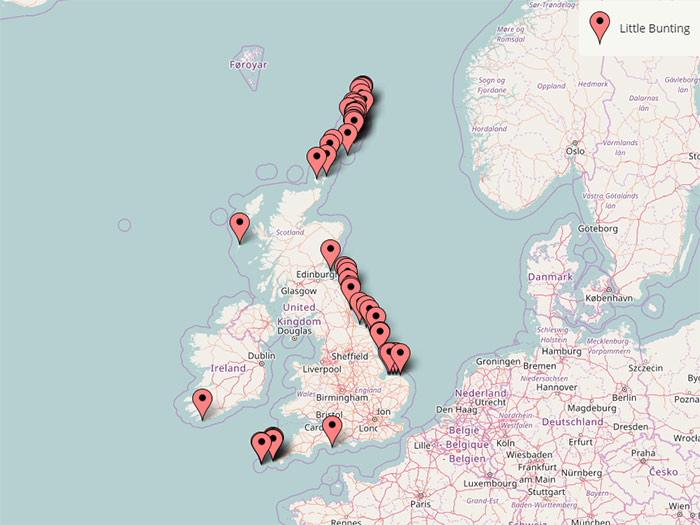
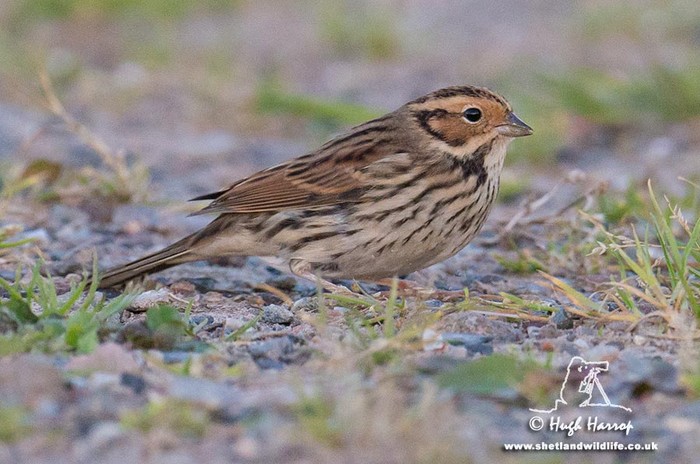
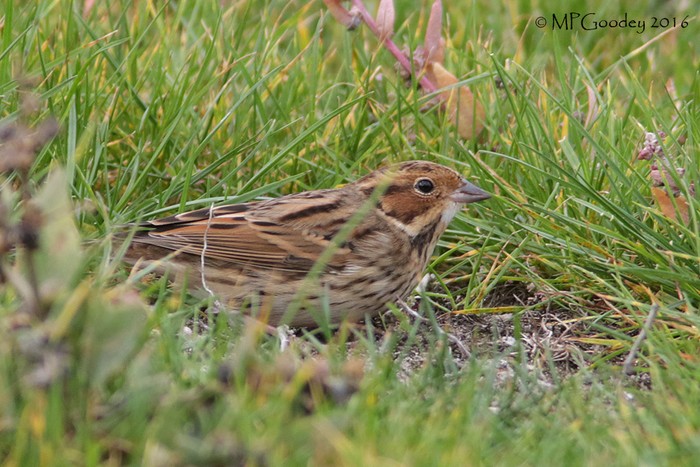
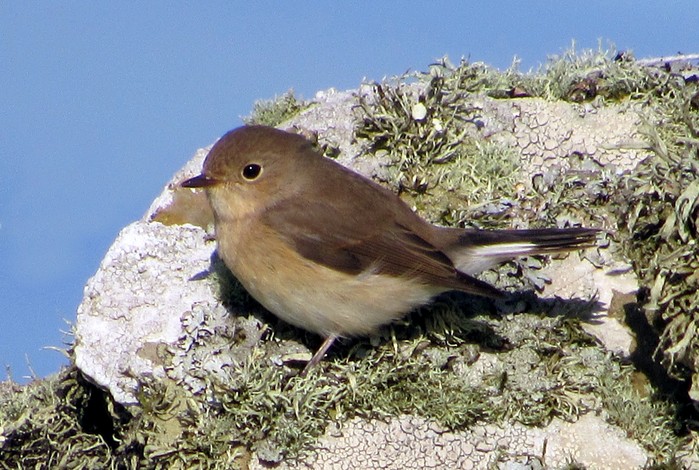
Also prominent this week were Red-breasted Flycatchers , with at least fifty noted, mainly on the east coast from Shetland to Norfolk but with a couple on the Isles of Scilly, four in Ireland (at Firkeel and Galley Head, both Cork, on Inishmore, Galway and at Kearney, Down) and, most unusually, two in Dumfries and Galloway – at Auchie Glen and the Mull of Galloway.
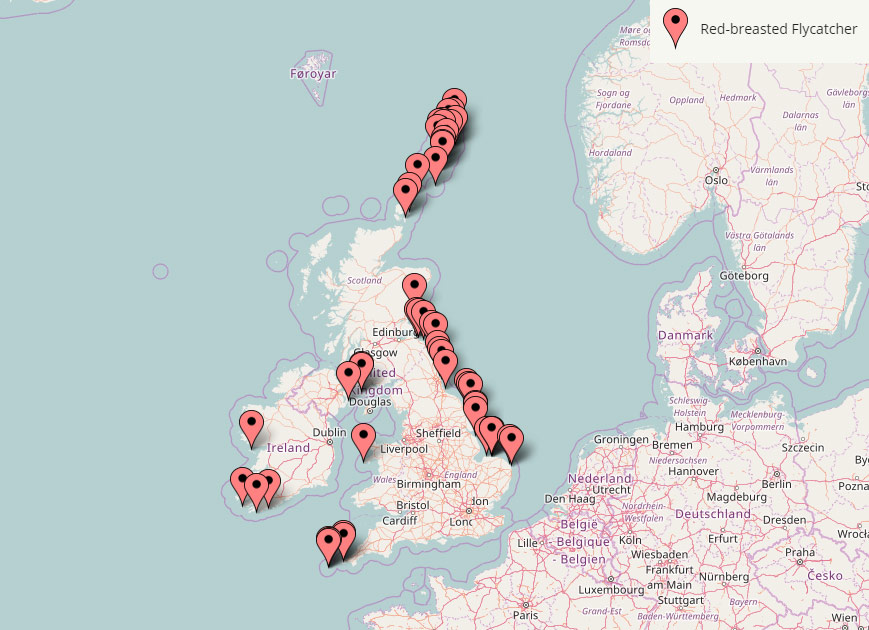
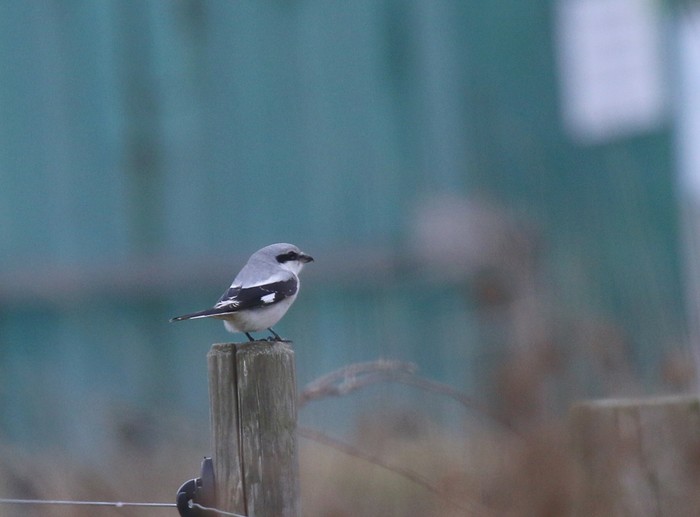
Great Grey Shrikes were suddenly obvious too with up to thirty noted although their distribution was more southerly. There were none in Scotland, all being found on the east coast between Northumberland and Kent apart from two in Hampshire and one in Somerset.
The real passerine star of the week, however, was Yellow-browed Warbler. This species was apparently everywhere, not just in the Northern Isles and on the east coast but also widely inland and in the West and Ireland too. The highest east coast count was 27 in the Spurn/Kilnsea/Easington area on 8th and there were some remarkable counts for the west coast and Ireland too including no fewer than twenty-two around Mizen Head, Cork, eighteen on Cape Clear, also Cork, fourteen on Bardsey, Gwynedd, twenty-eight on Barra, Western Isles, ten on Inishmore, Galway and nine around Swansea, Glamorgan.
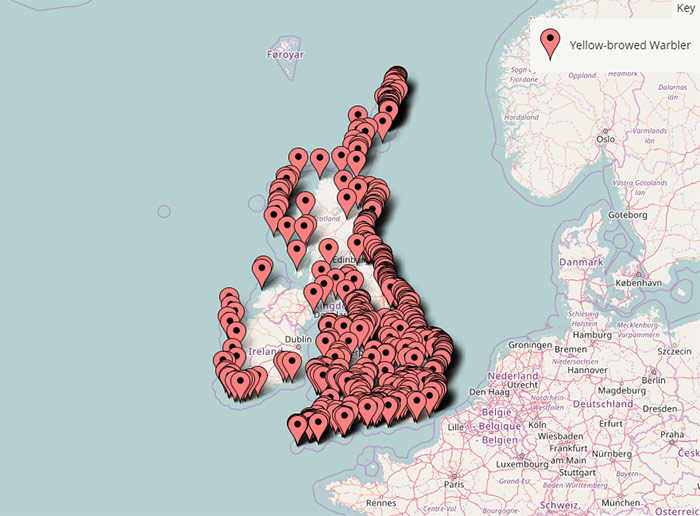
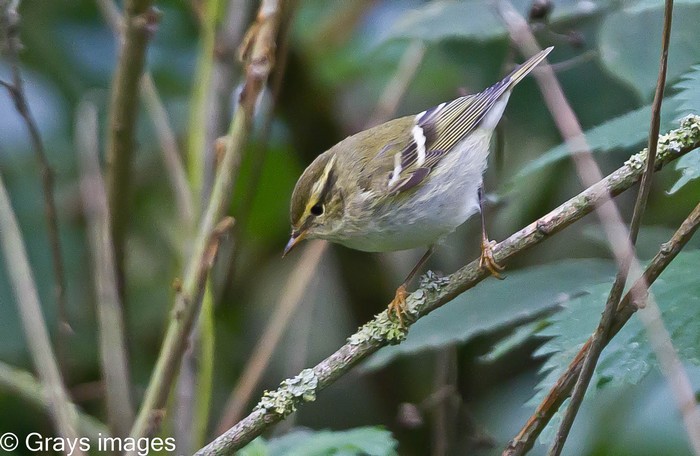
The Cheshire and Wirral and Lancashire area did particularly well with multiple birds recorded including three in a day on tiny Hilbre Island in the Dee Estuary. Remarkably, one of the Irish birds – at Brownstown Head, Waterford – was trapped and discovered to be wearing a Russian ring.
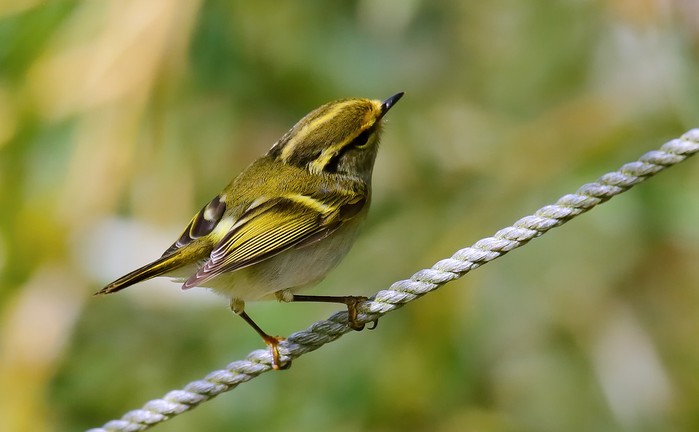
Siberia’s other sprite – the exquisite Pallas’s Warbler – also made its presence felt this week. After the first two of the autumn last week there was a mini-influx of almost thirty. As with the Great Grey Shrikes, their distribution was more southerly though one reached Fetlar, Shetland. Otherwise, all were on the east coast between Northumberland and Kent apart from one on The Lizard, Cornwall. Most came singly but Holy Island, Northumberland and Whitburn, Durham hosted two and Donna Nook, Lincolnshire did best of all with three.
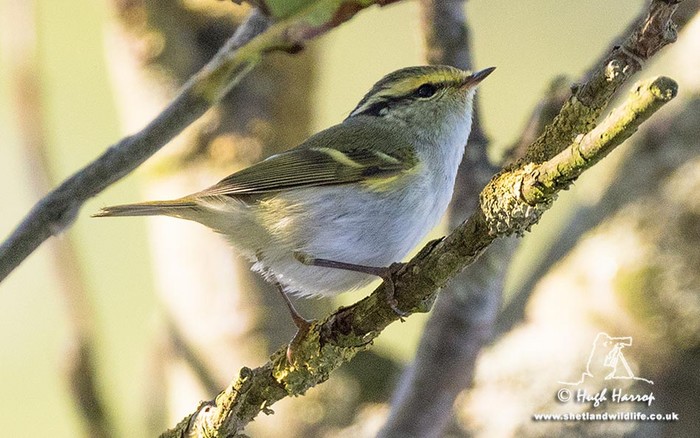
Rounding up the remaining scarce migrants, a Melodious Warbler was on St. Mary’s, Isles of Scilly on 5th and 6th and a Marsh Warbler at Levenwick, Shetland on 7th. Short-toed Larks were scarce with just six recorded - on Harris, Western Isles (a good bird here) on 7th, on Bryher, Isles of Scilly on 8th and 9th, at Spurn, Yorkshire and Nanjizal, Cornwall on 8th, on St. Mary’s, Isles of Scilly on 9th to 11th and at Hillwell, Mainland Shetland on 11th.
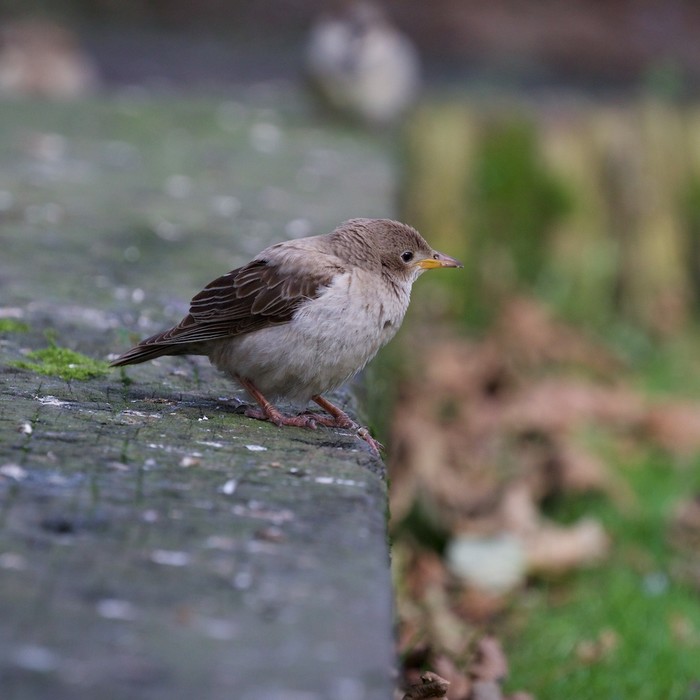
Rose-coloured Starlings were still at Gwithian, Cornwall to at least 8th, Scalloway, Shetland to at least 10th, Weymouth, Dorset to at least 11th, Donna Nook, Lincolnshire on 7th to 10th, Cley, Norfolk and Porth Mear, Cornwall on 8th, the New Forest, Hampshire on 9th and Roche, Cornwall on 10th.
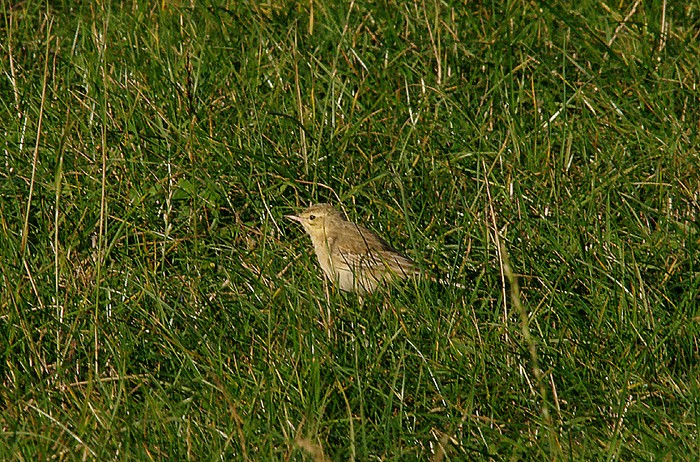
Richard’s Pipits made more of an appearance this week with at least twenty-five recorded, almost all on the east coast or in the Southwest though two were at Foryd Bay, Gwynedd on 8th and another on Bardsey, also Gwynedd, on 9th and one was on Dursey Island, Cork on 10th. A Tawny Pipit was at Exmouth, Devon on 10th.
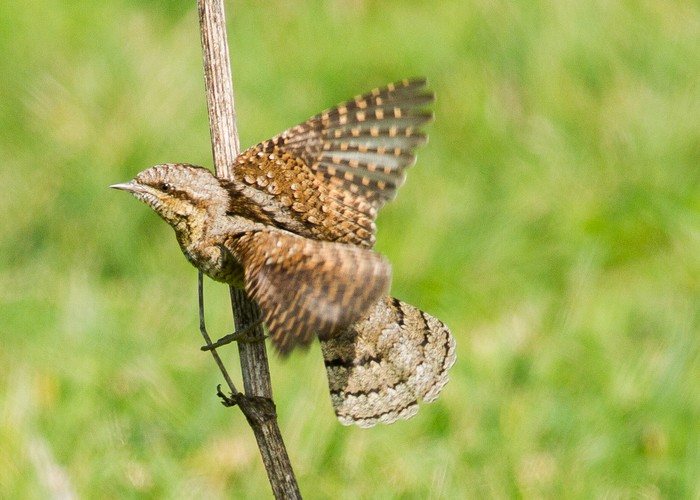
Wrynecks numbered around a dozen, all in the Southwest or southern Ireland apart from one on Fair Isle, Shetland on 6th. There were at least a dozen Barred Warblers too, mainly on eastern coasts but one was at Mewslade, Glamorgan on 6th and another on Harris, Western Isles on 7th. Red-backed Shrikes were down to five, only slightly more than the number of Brown Shrikes! These were mainly shared between Shetland and the Isles of Scilly but one was at Dunwich, Suffolk on 11th.
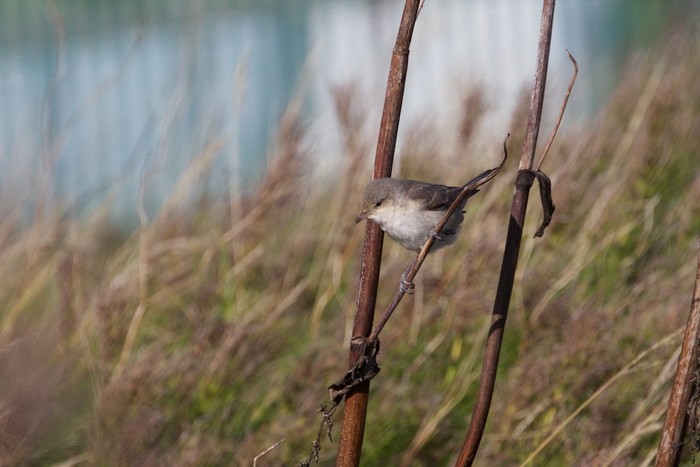
Common Rosefinches totalled around ten, almost all on Shetland, Orkney or the Isles of Scilly but singles were at Portland, Dorset on 7th and 8th, Reydon, Suffolk on 8th and 10th and on Tory Island, Donegal on 11th. The dozen or so
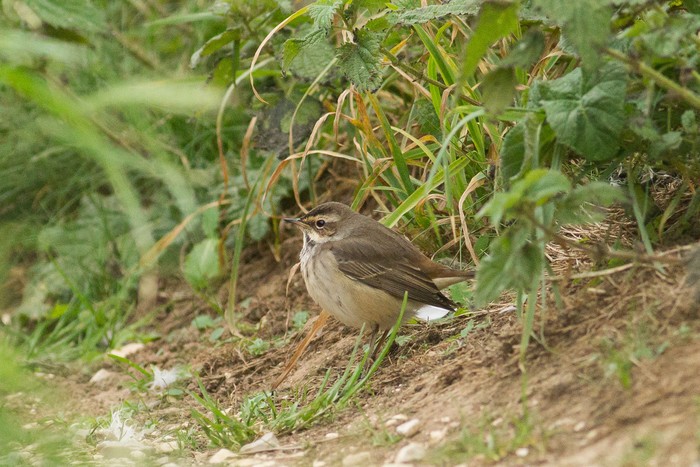
Bluethroats were similarly distributed - all on Shetland apart from one at Bempton, Yorkshire on 6th to 9th and others at Easington, also Yorkshire, and Skegness, Lincolnshire on 8th. Nine Ortolan Buntings were also logged - at Arundel, Sussex and North Ronaldsay, Orkney on 6th, Loch of Spiggie, Mainland Shetland on 7th, Easington, Yorkshire, North Ronaldsay, Orkney and St. Abbs, Borders on 8th, Hillwell, Mainland Shetland on 9th to 11th and Thurlestone, Devon, Knockadoon Head, Cork and Burnham Overy, Norfolk on 10th.
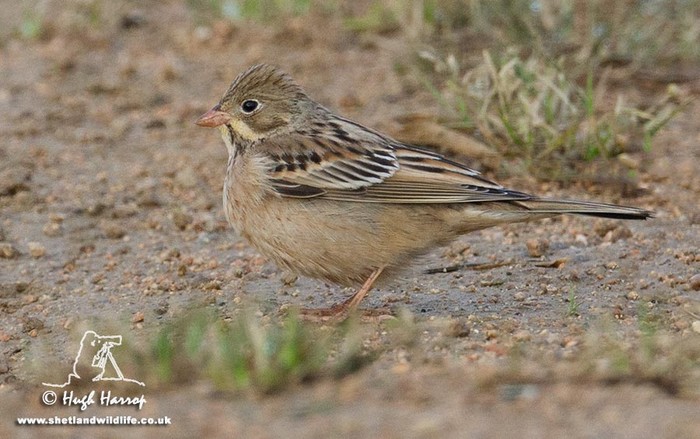
Finally, Hoopoes were at Butt of Lewis, Western Isles and North Berwick, Lothian on 6th, a Penduline Tit was at Worth, Kent on 10th, Woodchat Shrikes were at Aveton Giford, Devon on 5th and Spurn, Yorkshire on 11th and the autumn’s first Shorelark was at Sandwich Bay, Kent on 5th to 11th with others on 11th at Carlton Marshes, Suffolk and Donna Nook, Lincolnshire (two). The end of the week also brought some further hints of winter. The autumn’s first Waxwing was on Unst, Shetland on 10th and there was also a scatter of Mealy Redpolls down the east coast. Could we be in for an invasion of one or the other (or even both)?
Finally the non-passerines……… At sea, at least 175 Great Shearwaters were fifty miles south of the Old Head of Kinsale, Cork on 9th. A Cory’s Shearwater passed Spurn, Yorkshire on 6th and a handful of Sabine’s Gulls were in the southern North Sea. In the West one lingered off Heysham, Lancashire on 5th and 6th, one was off Berry Head, Devon on 7th and five were off Toe Head, Cork on 9th.
Three Long-tailed Skuas passed Killingholme, Lincolnshire and two passed Whitburn, Durham on 5th. Otherwise around nine were recorded, all in Yorkshire and Norfolk apart from one off Bawdsey, Suffolk on 11th.
Grey Phalaropes were at Kilnsea, Yorkshire, Thorpeness, Suffolk and Sandwich Bay, Kent on 5th and Frampton Marsh, Lincolnshire and North Ronaldsay, Orkney on 6th.
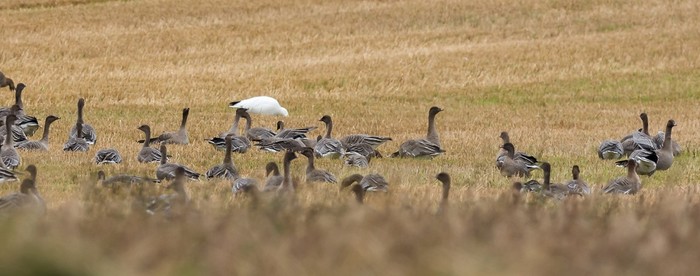
The best goose of the week was the Snow Goose still at Findhorn Bay, Moray to 11th. Otherwise the ‘Taiga Bean Goose’ was still at Flamborough Head, Yorkshire and ‘Black Brants’ were back at Mersea, Essex and Wells, Norfolk by 7th.
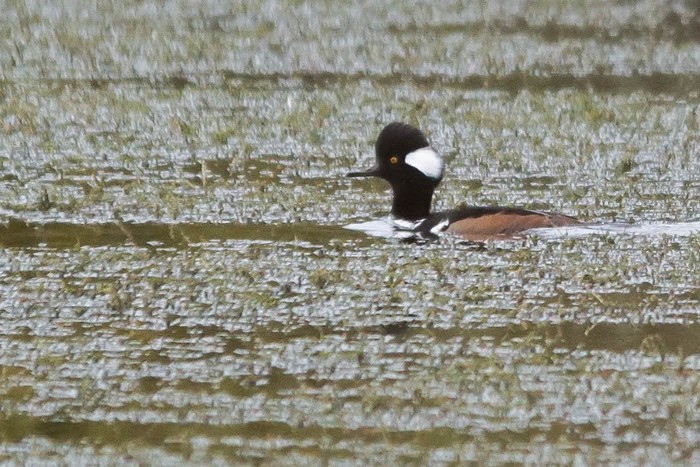
As for ducks, the most interesting discovery was an adult drake Hooded Merganser at Lochwinnoch, Clyde on 7th to 10th. Whilst there is doubtless much discussion to be had about its origins, it was, considering what else was going on, hardly the main talking point of the week. Otherwise the drake Surf Scoter was still of Musselburgh, Lothian to at least 11th and the female/juvenile off South Uist, Western Isles to at least 11th also. A drake King Eider was off Mullaghmore, Sligo on 10th. Finally, Green-winged Teals were at Ballyferriter, Kerry on 5th, on Sanday, Orkney on 7th to 10th and at Caerlaverock, Dumfries and Galloway on 11th, the drake Black Duck was still at Strontian, Highland on 7th and an American Wigeon was at Kirkwall, Mainland Orkney on 7th to 9th.
Great White Egrets achieved some remarkable numbers this week, presumably boosted by some continental immigration. Fifteen were at Blagdon Lake, Somerset with seventeen at Chew Valley Lake, also Somerset. Away from Britain’s best Great white Egret county, twelve were at Dungeness, Kent with a flock of nine at Ainsdale and Lytham St. Anne’s, both Lancashire, on 5th, seven at Leighton Moss, Lancashire also on 5th, and on 6th seven at Nanjizal, Cornwall and six at Conwy RSPB, Conwy and Burton Mere, Cheshire and Wirral.
Cattle Egrets were more prominent this week too, again indicating some continental arrivals. Up to two were around the Isles of Scilly to at least 10th, two were at Aveton Gifford, Devon on 6th to 7th and South Huish, also Devon, on 8th, three at Marshside, Merseyside still to 11th, up to four on the Nene Washes, Cambridgeshire on 7th to 11th and singles at Dungeness, Kent and Tacumshin, Wexford on 7th and Llansantffraed, Ceredigion on 8th.
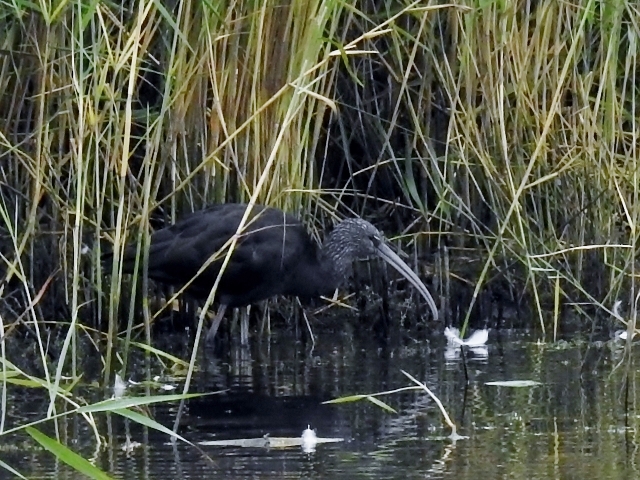
Two Glossy Ibises were at Dungeness, Kent on 5th with two still at Ham Wall, Somerset all week. Other singles were at the regular locations – Newington and Lound, Nottinghamshire, Cossington Meadows, Leicestershire, Fremington Quay, Devon, Pitsea, Essex, Tacumshin, Wexford and the Swords Estuary, Dublin.
An amazing sixty Spoonbills were in Poole Harbour, Dorset on 5th, is this a British record count? Finally, a Spotted Crake was still at Neumann’s Flash, Cheshire and Wirral to 7th (when two were present) and one was on St. Mary’s, Isles of Scilly on 7th, the same island hosting a Corncrake the next day. Other Spotted Crakes were at Chew Valley Lake, Somerset on 9th and 10th and Shapwick Heath, also Somerset, on 11th.
The only raptors of note were Honey-buzzards over Tottenham, London on 5th and Kelling, Norfolk and Brent Reservoir, London on 9th and Rough-legged Buzzards at Buckton, Yorkshire on 7th, Minsmere, Suffolk, Wix, Essex and Fulbourn, Cambridgeshire on 9th and Westleton, Suffolk on 10th.
American waders faded away somewhat this week, hardly surprising given the easterly bias to proceedings, and the story was one of birds hanging on rather than new arrivals. The Lesser Yellowlegs remained at Poole Harbour, Dorset, as did the Long-billed Dowitcher at Frampton Marsh, Lincolnshire, the Baird’s Sandpipers at Davidstow Airfield, Cornwall and Boulmer/Low Newton-by-the-Sea, Northumberland and two Semipalmated Sandpipers at Tacumshin, Wexford. Another ‘Semi-p’ was at Castlegregory, Kerry on 5th to 9th, another Baird’s at Inishmore, Galway on 8th to 11th and another Long-billed Dowitcher at Faversham, Kent on 9th to 11th. A new Lesser Yellowlegs was at Fingringhoe, Essex on 10th.
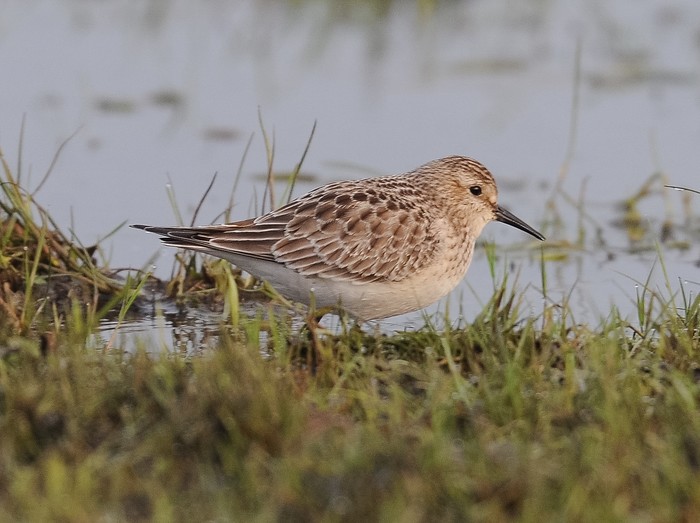
American Golden Plovers were on St. Mary’s, Isles of Scilly and at Rosscarberry, Cork and Carrahane Strand, Kerry on 5th, at Loop Head, Clare on 6th to 9th, on Tiree, Argyll on 6th to 10th, at The Cashen, Kerry (two) on 7th, on Barra, Western Isles on 8th, on The Mullet, Mayo on 9th, at Ballycotton, Cork (two) on 10th and 11th and on South Uist, Western Isles on 11th.
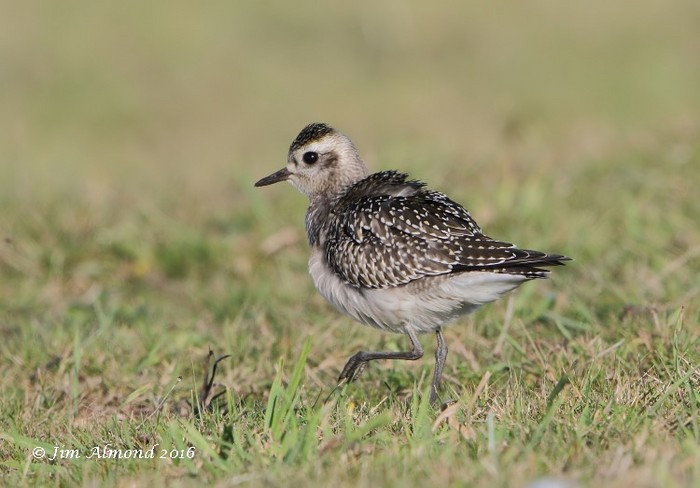
There were only nine Pectoral Sandpipers - at Titchwell, Norfolk to at least 10th, Minsmere, Suffolk and Queen Mother Reservoir, Berkshire on 5th to 6th, Blennerville, Kerry on 5th, Blagdon Lake, Somerset on 6th to 11th, Druridge Pools, Northumberland and South Uist, Western Isles on 9th, Slimbridge, Gloucestershire on 9th to 10th and College Reservoir, Cornwall on 9th to 11th. There were far fewer Buff-breasted Sandpipers – just two in fact, on St. Mary’s, Isles of Scilly still to 5th and at Boddam, Mainland Shetland on 9th to 11th.
As for Palearctic waders, a Pacific Golden Plover flew over Rattray Head, Aberdeenshire on 9th, Great Snipes were on Unst, Shetland on 5th and Fetlar, also Shetland, on 8th and the week’s only Dotterels were on North Ronaldsay, Orkney on 7th, South Uist, Western Isles on 8th, at Zennor, Cornwall on 10th and 11th and on Bryher, Isles of Scilly (two) and at Nash Point, Glamorgan on 11th.
An ‘Azorean Gull’ at Blennerville, Kerry on 5th was the best gull of the week but there was also an adult Bonaparte’s Gull at Whitburn, Durham on 5th, a Ring-billed Gull at Black Rock Strand, Kerry on 5th to 9th, Glaucous Gulls at Kingston, Moray on 8th and Yell, Shetland on 11th and an Iceland Gull on Mull, Argyll on 8th.
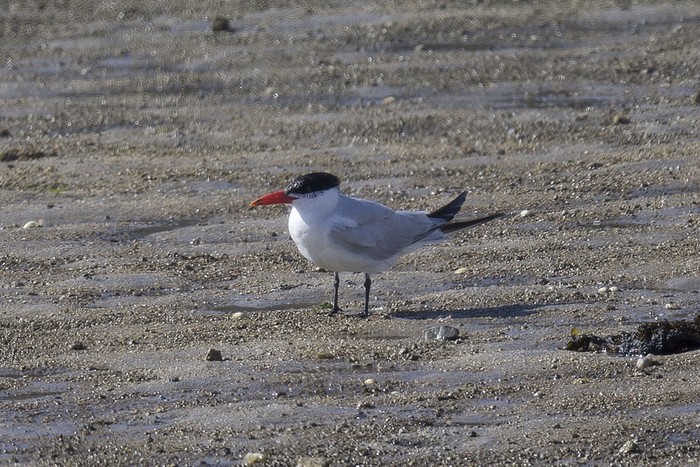
The headline tern was undoubtedly a Caspian Tern at Porth Hellick, St. Mary’s, Isles of Scilly on 6th (visiting Penzance, Cornwall the same day) and then on 7th and 8th in Devon at Fremington Quay, Yelland Quay and Horsey Island. This is a remarkable record for October and also a good bird for the Southwest. It represents a new bird for the Isles of Scilly and is only the third for Cornwall and fourth for Devon. The only other tern news involved Forster’s Tern sightings at Rogerstown, Dublin and Dundalk, Louth.
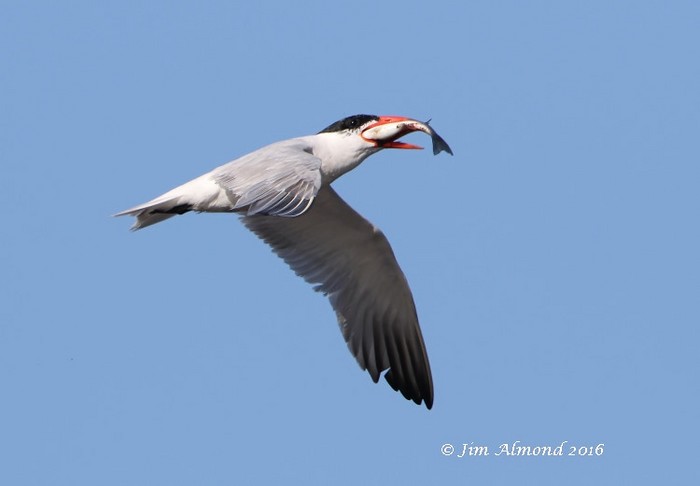
Looking ahead, the weather charts promise more of the same. The high pressure looks locked firmly in place with a continuing long range easterly flow until at least next weekend. Thereafter the wind swings into the southeast and then the southwest for most of the country although the southeasterlies into the Northern Isles look set to continue. For the next few days at least, therefore, the stakes have never been higher for Siberian birds but given this week’s riches it is hard to think what might top what has already arrived. An obvious candidate for the coming days is of course the now near-annual Siberian Rubythroat but the list of other targets is long and includes the likes of Siberian Blue Robin, Rufous-tailed Robin, Chestnut-eared Bunting and Sakhalin/Pale-legged Leaf Warbler. And given the current concentration of birds in southwest Norway could a Hawk Owl come too? Or might the eventual change in the weather mean a sudden switch of attention to Scilly? In mid-October anything is possible….
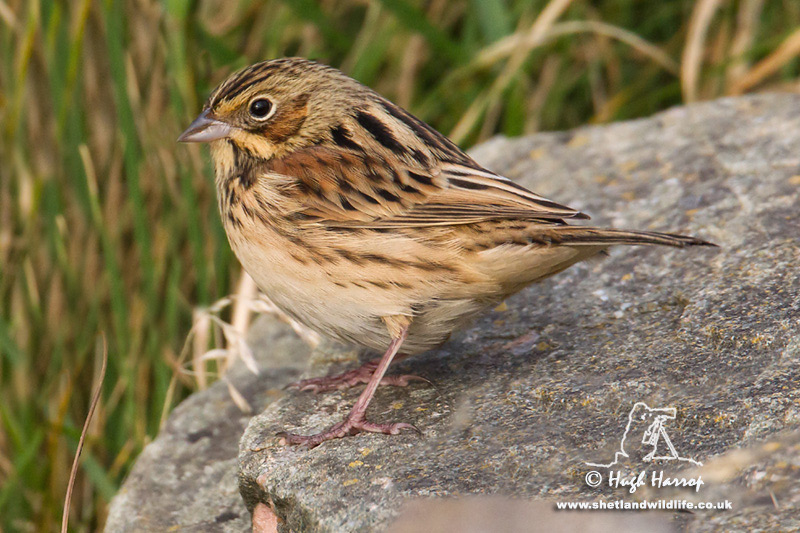
Andy Stoddart
12 October 2016










